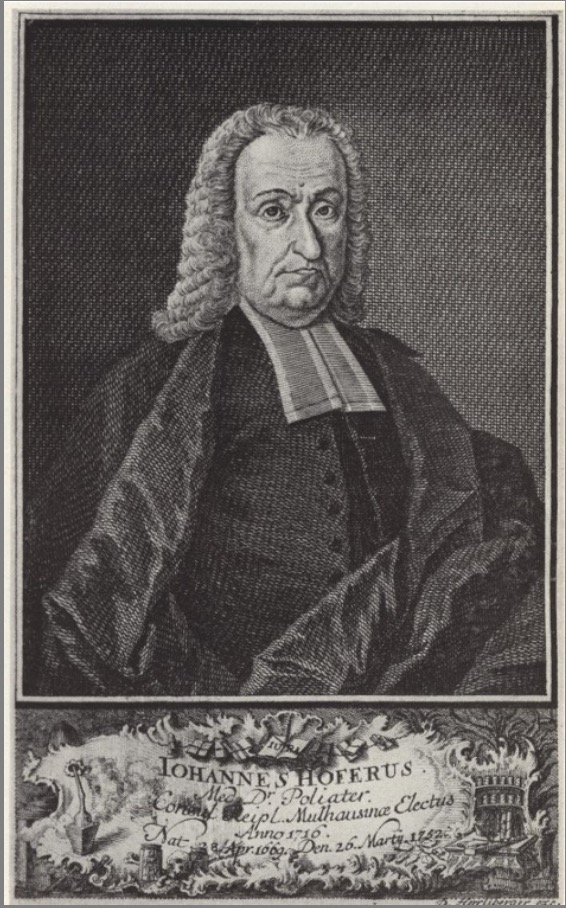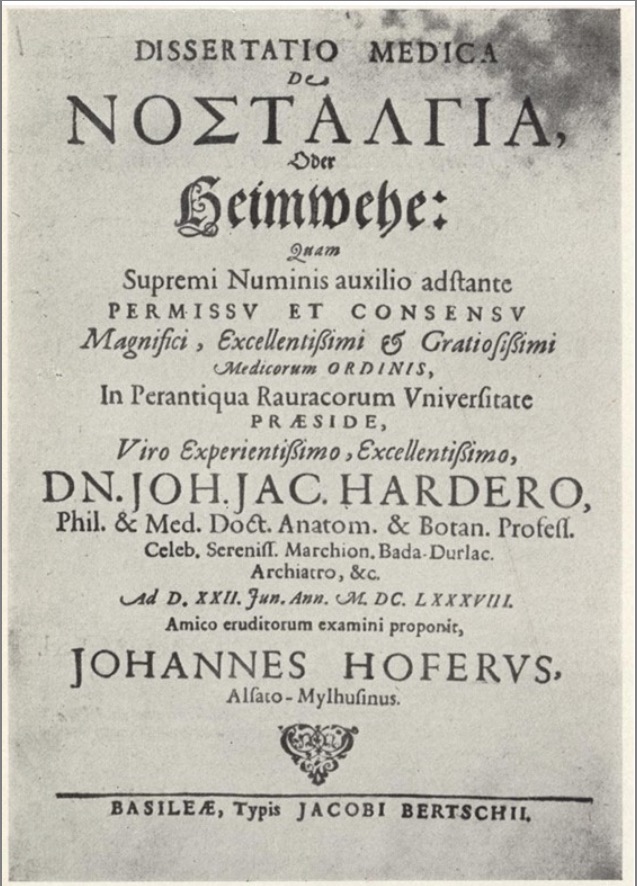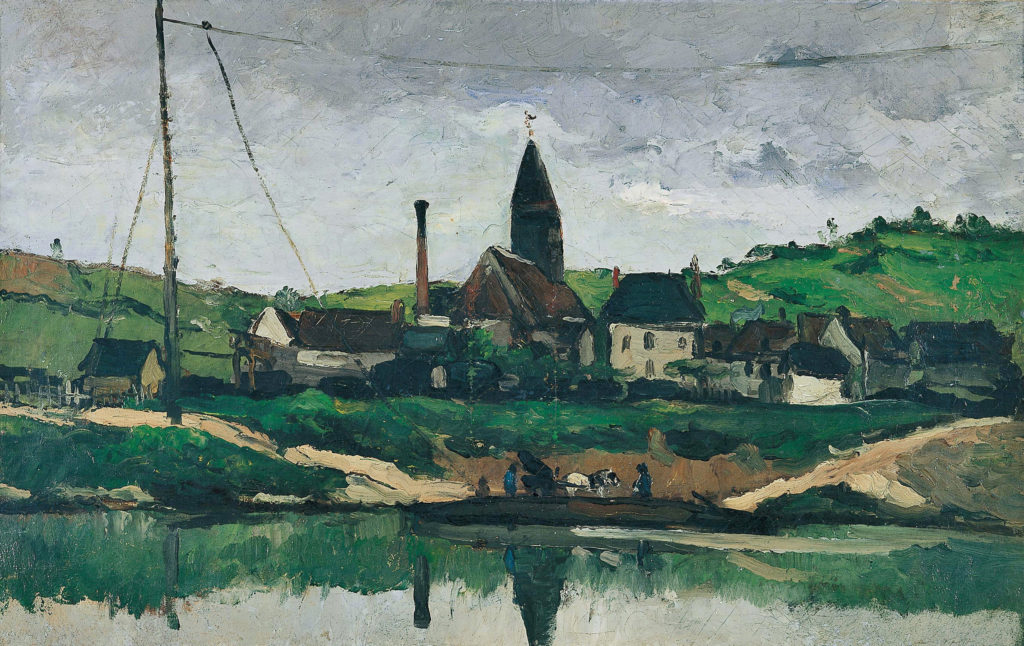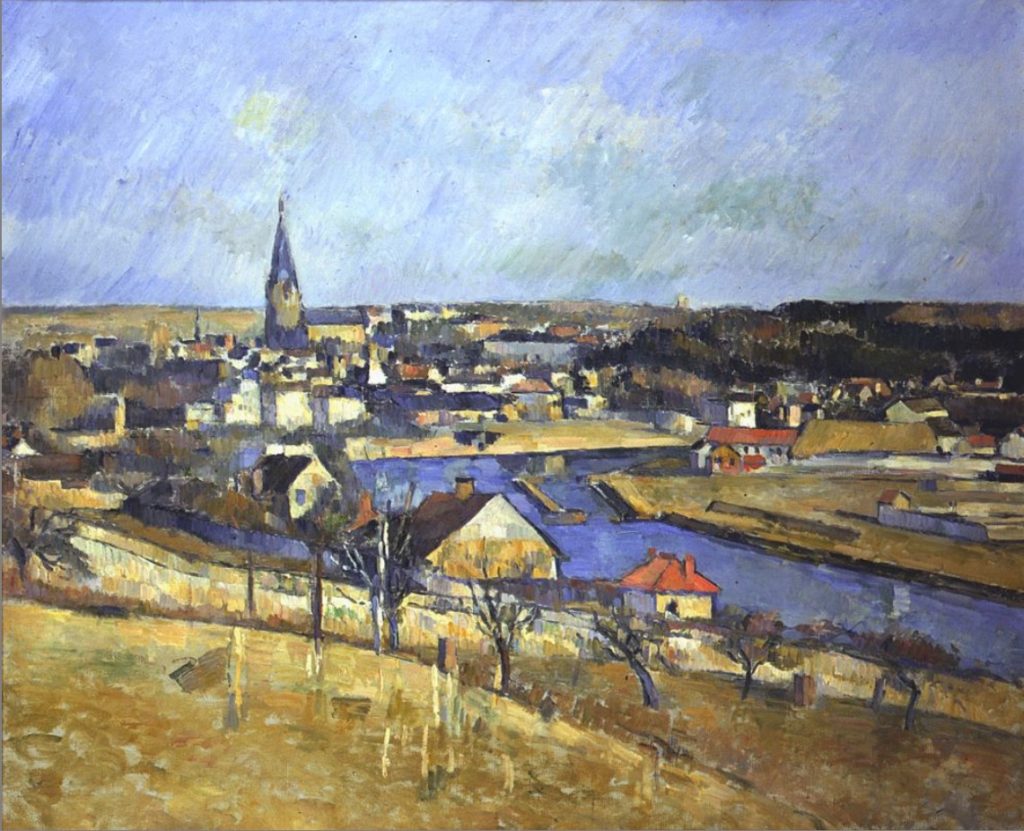Cezanne nostalgique: Nostalgia, Memory, Illusion
by Nina Athanassoglou-Kallmyer
Abstract
Author
Email the author: nina[at]udel.edu
Citation
License
 unless otherwise noted.
unless otherwise noted.Article
In 1878, Le Messager de l’Europe published a short piece by Émile Zola (1840–1902) entitled “Aux champs.” Zola reminisces about how, when he and Paul Cezanne (1839–1906) lived in Paris in the 1860s, they would take the train on Sundays from Paris heading to the woods of Verrières, a small village in the Essone department, sixteen kilometers south of the city, on the route to Fontainebleau. Sometimes they were joined by their Provençal friends, including Baptistin Baille (1841–1918) or Antonin Valabrègue (1844–1900), both of whom had moved to Paris[1]Baptistin Baille, born in Aix, became a brilliant scientist following his studies at the École Polytechnique in Paris. He was a close childhood friend of Cezanne’s and Zola’s and shared their escapades and swimming sprees in the countryside of Aix. Although a scientist, he also took part in Cezanne and Zola’s exchanges of opinion on poetry, literature, and painting, as evident from their letters of the 1860s. Baille’s period photographs show him clad in the mandatory military uniform of a polytechnicien, impeccably groomed, with closely cropped hair and a perfectly trimmed goatee and mustache.
Antonin Valabrègue was a poet and art critic born in Aix, like his friends Zola, Cezanne, and Baille. He studied in Paris, and, after a brief return to Aix, settled in Paris permanently beginning in the mid-1860s. His poems and essays were published in journals and literary collections, including L’Artiste, Le Parnasse contemporain, and La Revue bleue, among others. His portraits by Cezanne show him with a beard; wavy, medium length, unkempt dark hair; and wearing a loose, dark jacket over his droopy shoulders.
In his account of 1878, Zola identifies only himself (lying on the grass, with a book at his side) and Cezanne (smoking his pipe while meditating on his study for a painting and staring at the canvas sail of a boat)..
One day Cezanne, Zola, and Valabrègue stumbled upon a sunny clearing with a tiny lake in its midst, surrounded by trees and flowers. They named it “the green lake” (la mare verte), although, as they later learned, its real name was “La mare à Chalot.” But let’s listen to Zola:
A profound calm, a sublime peacefulness reigned in this tiny clearing. One would dream of the ancient goddess Diana at her bath steeping her snow-white feet in the secret springs of the wood. . . . [From then onward] the “green lake” became the destination of all our walks. We were in love with it, spending the whole of our Sunday by its banks covered with delicate grass. Paul had started a study for a painting, water in the foreground with tall grass stems floating in it. . . . I would stretch out on my back, a book by my side. But I was not reading at all, I was looking at the sky through the foliage. . . . When we came out of the woods it was as if we had [suddenly] awakened [from a dream][2] “Un calme profond, une paix souveraine endormait ce trou clair. On songeait au bain de la Diane antique trempant ses pieds de neige dans les sources ignorées du bois. . . . La mare verte avait fini par devenir le but de toutes nos promenades. . . . Nous l’aimions d’amour, passant la journée du dimanche sur l’herbe fine qui l’entourait. Paul avait commencé une étude . . . moi je m’étendais sur le dos un livre à mon côté; mais je ne lisais guère, je regardais le ciel à travers les feuilles. . . . Quand nous sortions du bois, c’était comme un réveil.” Émile Zola, “Aux champs,” in Contes et nouvelles, ed. Roger Ripoll (Paris: Gallimard-NRF, 1976), 673–74..
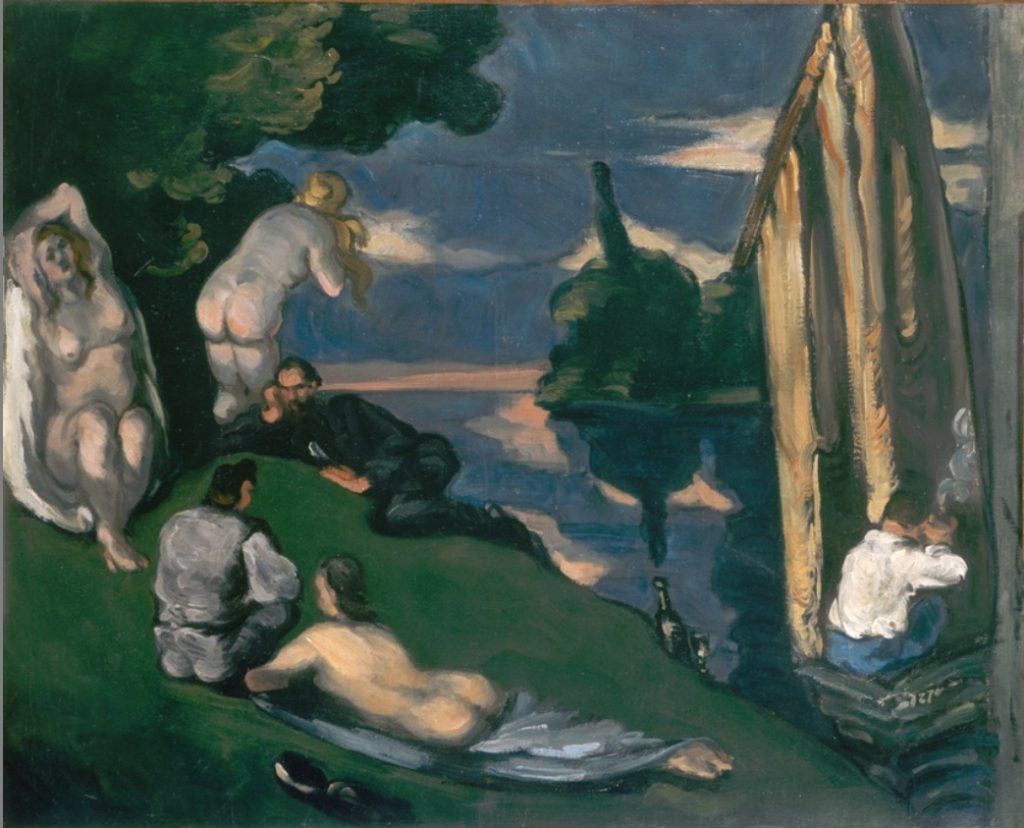
Fig. 1, Paul Cezanne, Pastorale, 1870. Oil on canvas. Musée d’Orsay, Paris. Artwork in the public domain; photograph courtesy of the Musée d’Orsay (FWN 609).
Several years later, in 1870, Cezanne returned to these memories in his painting Pastorale (fig. 1). The three friends are seated by the lake under the shadow of the lush foliage, each absorbed in his own world. Stretched out on the grass, Zola, in a black suit, daydreams with a book by his side; Valabrègue, his back to the viewer, seems to meditate on some new verses; Cezanne, also seen from behind, sits at the edge of the lake smoking a pipe, a wine bottle next to him, facing the windblown sail of a boat, a stand-in for a canvas on an easel. The three men are accompanied by three female nudes of classical vintage and Rubenesque corpulence, invisible to the men as if products of their imaginations. The women may represent muses, alluring Arcadian nymphs, or simply oversized erotic fantasies. More erotic innuendoes are intimated in the phallic-like surge of a tree branch on the opposite banks of the pond, the enlarged shadow of which assumes an ambiguous form, between an enlarged bottle and a phallus, that meets the tip of Cezanne’s wine bottle, a bawdy visual rebus typical of Cezanne’s youthful humor: excessive drinking spawns sexual desire, the painter seems to say. The dominance of dark green and black contours and shadows evokes Édouard Manet’s (1832–83) Déjeuner sur l’herbe (Luncheon on the Grass) (1863) while also enhancing the dream-like, unreal overtones of the scene’s imagery.
There are common points between the verbal and the visual narratives. Both writer and painter recreated the scene from memory after a lapse of several years. And they both cast their narratives as a dream that called forth memories of their native Provence. Zola’s account is peppered with phrases such as “I remember” (je me souviens) or “it happened twenty years ago” (il y a vingt ans), nostalgic references to past temporalities. Cezanne represents his fantasyland as a Virgilian Arcadia inhabited by sensuous nymphs and courting shepherds that hark back to the erotic poems he composed and sent from Aix-en-Provence to Zola in Paris[3]For Provence reimagined as an Arcadia, see Nina Athanassoglou-Kallmyer, “Arcadia,” chapter 5 in Cezanne and Provence: The Painter in His Culture (Chicago: University of Chicago Press, 2003), 187–231.. Both men are fascinated by the lush pine trees that frame the lake, trees that remind them of the Midi: “pines with twisted trunks sprout between the rocks. . . . During the hot July days one might think he is in a remote corner of Provence. . . . When we came out of the woods, it was like an abrupt awakening,” Zola writes[4]“des pins tordus poussent entre les rochers; par les jours brûlants de juillet on pourrait se croire dans un coin perdu de la Provence.” Zola, “Aux champs,” 671. Zola, like Cezanne, viewed pine trees as emblematic of Provence and the opposite of Paris. In a letter to Cezanne of June 14, 1858, Zola writes that in Paris “one finds no age-old pine tree,” and goes on to say: “I prefer Aix to Paris. Is it because of the trees swaying in the breeze?” Quoted in Paul Smith, “Joachim Gasquet, Virgil and Cezanne’s Landscape: ‘My Beloved Golden Age,’” Apollo 148 (October 1998): 13..
A brutal awakening, to be sure, considering that the three friends, recently arrived in Paris from the south, literally loathed the capital. In his letters, Zola complains constantly about the gloomy, rainy skies, the ugliness, and the filth of the big city, and the unfriendly faces of its inhabitants. He confesses his disappointment as the stagecoach that brought him to Paris entered the city. He had expected streets bordered with palaces, but instead, “the heavy coach was riding through half-ruined buildings, taverns, and ill-famed houses . . . then we were steeped in pitch-black streets.”[5]“Je m’attendais à une succession de palais, . . . la lourde voiture roulait entre des constructions borgnes, des cabarets, des maisons suspectes . . . puis on s’enfonçait dans des rues noires.” Zola, “Aux Champs,” 664. And further: “Paris looks sad like an ill-tempered spinster . . . the ground is permanently covered with mud, the sky with clouds, the houses with an ugly layer of plaster, the women with makeup of all colors. Here before the face there is always a mask.”[6]“Paris est triste à l’oeil comme une duègne réchinée . . . le sol est couvert de boue, le ciel de nuages, les maisons d’un villain badigeon, les femmes de fard de toutes le couleurs. Ici avant le visage il y a toujours un masque.” Letter from Zola to Cezanne, January 16, 1860, in Émile Zola, Correspondance (1858–71), ed. Maurice LeBlond, vol. 1 (Paris: Bernouard, n.d.), 30. The sight of the unattractive bodies of Parisian bathers along the Seine, “these grotesque urban bourgeois . . . with their sagging flesh symbolic of the corrupt capital,” disgusts him: “Oh! what ugliness,” he exclaims[7]“Et quelles laideurs!,” Émile Zola, “Souvenirs,” in Contes à Ninon et nouveaux contes à Ninon (Paris: F. Bernouard, 1874), 478–79.. To reinforce his views, he invokes the opposite of these bathers, the healthy, athletic bodies of his school friends reimagined as handsome, ancient Greek heroes in swim trunks or wrapped in mantle-like towels, standing or lounging on the green banks of the Arc river, at the foot of the Sainte-Victoire Mountain. The image of an ideal antiquity, that is, ancient Athens, replaces that of modern Paris:
We lay on the sand for hours. . . . After that there was endless swimming . . . it was good then to wrap oneself in a bathrobe and walk. . . . You are in Athens, barefoot, your neck is free, a simple towel is rolled around your waist . . . our nakedness feels happily comfortable within this piece of fabric. Our dream reached all the way back to Greece, to the eternal blue Archipelago[8]Zola, “Souvenirs,” 478–79..
That dream-like paradise was the friends’ antidote to the dismal realities of Paris, a refuge of blissful forgetfulness for which they longed throughout their working week: “What it meant for us was forgetting everything, forgetting Paris, entering a paradise that we had dreamt about during the six days of the week.”[9]“C’était pour nous l’oubli de tout, l’oubli de Paris, l’entrée dans le paradis rêvé pendant les six jours de la semaine.” Zola, “Aux champs,” 669–70.
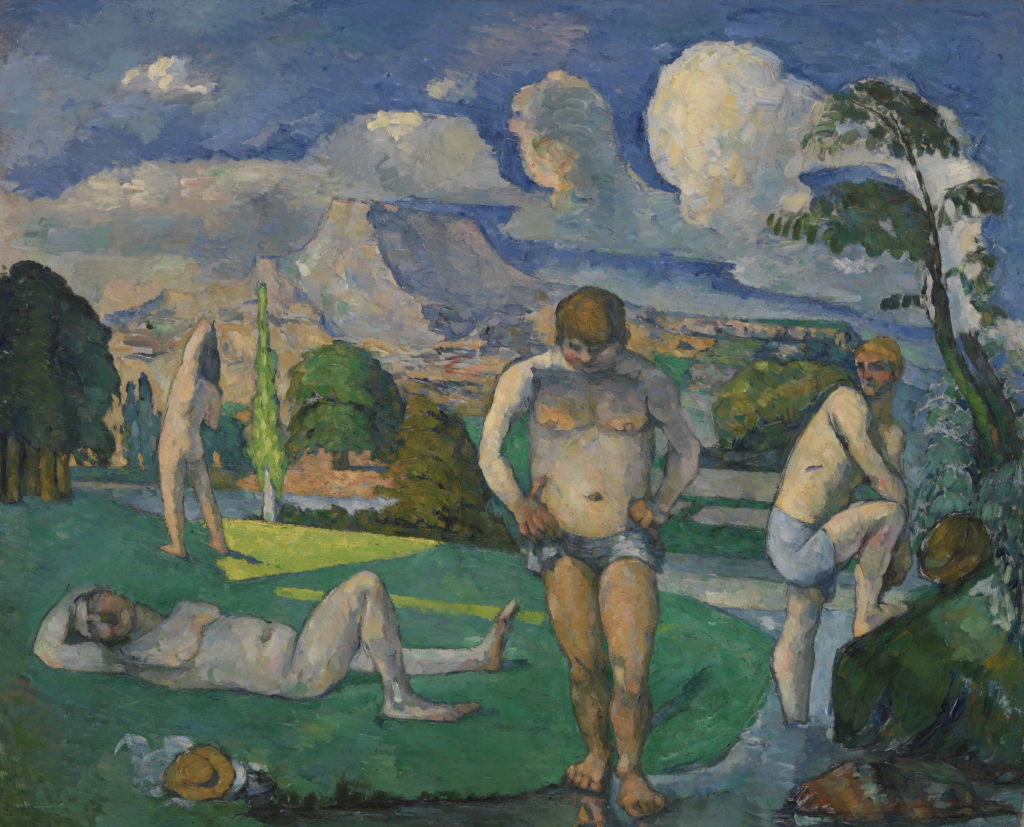
Fig. 2, Paul Cezanne, Bathers at Rest (Les Baigneurs au repos), 1876–77. Oil on canvas. Barnes Foundation, Philadelphia. Artwork in the public domain; photograph courtesy of the Barnes Foundation (FWN 926. See also FWN 924, FWN 925-TA, FWN 2020).
In turn, Cezanne re-creates with his brushes Zola’s dream-like memory (fig. 2). Against the background of a sunny landscape and a blue sky studded with white clouds rises the triangular shape of the Sainte-Victoire Mountain, while bathers, naked or in modern bathing suits, reenact the poses of classical prototypes by Polykleitos or Lysippus, whose sculptures Cezanne drew during his visits to the Musée du Louvre. Though at first glance realistic, the painting’s eerie, dream-like tenor cannot be overlooked: proportions are off, and the large figures dwarf the setting, including the river which looks more like a stream. The bathers are frozen in their individual poses with no sign of an interaction or link between them. The clouds are threatening, solid masses weighing down from above. Strident colors—raw green for the grass and sharp, bitter yellow for its sunny patches—exude an uncanny glow. The picture radiates a haunting intensity, a transtemporal, unattainable vision with surreal overtones.
Cezanne’s letters from Paris to his friends in Aix resonate with discontent similar to Zola’s. In a letter from June 4, 1861, he complains to his friend Joseph Huot that “the stuff here is dreadful,” and that during his visits to Versailles, the Louvre, and the Musée du Luxembourg, he only saw “potboiler” artworks: “Don’t think that I’m becoming a Parisian,” he announces[10]Paul Cezanne, The Letters of Paul Cezanne, ed. and trans. Alex Danchev (Los Angeles: J. Paul Getty Museum, 2013), 107. See also Denis Coutagne, “The Challenge of Paris for Cezanne,” in Cezanne and Paris, exh. cat. (Paris: Musée du Luxembourg, 2011), 15.. He piles on linguistic tropes that allude to memories of an idyllic time in the past in an Arcadian Provence: “Do you remember our lovely swims on the lovely banks of the impetuous stream?” he asks Zola in 1858; “I miss the day we went to the meadow of the Torse to eat a good lunch and with palette in hand,” he tells Numa Coste in 1863; five years later in another letter to Coste, he writes: “I don’t know if I’m living or simply remembering, but everything makes me reminisce. . . . I recalled our attempts at climbing [the Sainte-Victoire Mountain]. Will we ever try again?”[11]Paul Cezanne, letter to Numa Coste, January 5, 1863, in Cezanne, Letters of Paul Cezanne, 112; and Paul Cezanne, letter to Numa Coste, July 18, 1868, in Cezanne, Letters of Paul Cezanne, 135. And in a letter to his parents, written from Paris in 1874, he begs his mother to intercede with his father for a stipend that would allow him to live and paint in the Midi, “where the views offer such possibilities for my painting. I earnestly beg Papa to grant me this request and then I think that I will be able to make in the Midi the studies I want to pursue.”[12]Cezanne, Letters of Paul Cezanne, 155.
Writing from Paris to Baille on June 10, 1861, Zola confirmed Cezanne’s distress: “I need only tell you that no sooner had he [Cezanne] got here, that he was talking of going back to Aix, after struggling for three years to make the journey, and seemingly unbothered.”[13]Cezanne, Letters of Paul Cezanne, 109.
Nostalgia, a Disease of Body and Mind
In this article I seek to understand how Cezanne’s searing nostalgia affected his visual imaginary—indeed led him, as if prey to a somnambulist’s spell, to pictorially revive a reminisced “elsewhere” while miles away from home. But what was nostalgia in the first place, and what did it mean in the nineteenth century? In our technological age the word has endured “bad press,” scorned as if it were an outdated notion smacking of cheap romantic fictions and excessive sentimentality. “Nostalgia is to memory what kitsch is to art,” writes the historian Charles Maier[14]Charles Maier, “The End of Longing? (Notes toward a History of Postwar German National Longing),” in The Postwar Transformation of Germany: Democracy, Prosperity, and Nationhood, ed. John S. Brady, Beverly Crawford, and Sarah Elise Williarty (Ann Arbor: University of Michigan Press, 1999), 273. See also Svetlana Boym’s comments on Maier’s “The End of Longing” in her book The Future of Nostalgia (New York: Basic Books, 2001), xiv.. This was not always the case, however. In a pioneering article of 1966, Jean Starobinski traced the history of the word and its meaning to the seventeenth century, in the medical dissertation of one Johannes Hofer, a Swiss medical student at the University of Basel, titled “Dissertatio medica de Nostalgia, oder Heimweh” (“Medical Dissertation on Nostalgia, or Homesickness”) (figs. 3, 4)[15]Johannes Hofer, “Dissertatio medica de Nostalgia, oder Heimweh” (PhD diss., University of Basel, 1688). Hofer’s dissertation was translated into English by Carolyn Kaiser Anspach as “Medical Dissertation on Nostalgia by Johannes Hofer, 1688,” Bulletin of the History of Medicine 2, no. 6 (1934): 376–91. Starobinski cites Hofer’s dissertation as the first to attempt to convert nostalgia from “an emotional phenomenon, into a medical phenomenon.” Jean Starobinski, “The Idea of Nostalgia,” Diogenes, no. 54 (1966): 84. See also George Rosen, “Nostalgia: A ‘Forgotten’ Psychological Disorder,” in Clio Medica. Acta Academia Internationalis Historiae Medicinae, vol. 10 (Leiden: Brill, 1975), 28–51, for a more extensive survey of the nosological realities of nostalgia throughout the centuries; and Michael Roth, “Dying of the Past: Medical Studies of Nostalgia in Nineteenth-Century France,” History and Memory 3, no. 1 (Spring 1991): 5–29.. According to Hofer, nostalgia—in Greek, νοσταλγια (nostalyia); in German, Heimweh; in French, “le mal du pays”; in English, “homesickness”—is a psychosomatic ailment originating in the brain’s nerve fibers that store impressions of one’s native land. Patients suffering from the disease constantly fantasize about their homeland and dwell obsessively about a return to it. Hofer coined the term by conflating two Greek words, nostos (homecoming, return) and algos (pain, suffering). For him, the archetypal personification of the nostalgic was Homer’s Odysseus longing for his remote kingdom on the Greek island of Ithaca, envisioned as the utopian end of his travails[16]See Vlaldimir Jankelevitch, L’Irréversible et la nostalgie (Paris: Flammarion, 1974), 283–310, for an analysis of the nostalgic as personified by Ulysses and the interpretation of his travels.. Hofer observed that, like modern versions of Odysseus, mercenary soldiers languished and wasted away from nostalgia when far from home. Their disease carried a set of recognizable psychological and physiological symptoms, ranging from insomnia, lack of appetite, melancholy, hallucinations, and—in extreme cases—suicide.
In the wake of Hofer’s dissertation, nostalgia entered official nosologies internationally and generated a voluminous medical literature. It was still part of the medical agenda throughout the eighteenth and nineteenth centuries, until roughly the 1900s, when it was no longer included in clinical medicine manuals and redefined as a mere psychological disorder, relegated to the realm of psychiatry[17]Michael Roth mentions that the demedicalization of nostalgia may have even started as early as the 1850s. Roth, “Dying of the Past,” 7.. But at its height, the disease captured the attention of famous men, such as Johann Wolfgang von Goethe (1749–1832), Anton Chekhov (1860–1904), and Honoré Balzac (1799–1850). Longing for his native Touraine, Balzac, for one, created the nostalgic hero of his novel Louis Lambert (1832) as his alter ego, and expressed his fear of dying from the disease in a letter of 1838: “I suffer from homesickness, I come and go without spirit, without being able to say what I have, and if I remained this way for two weeks, I should die.”[18]Letter from Honoré Balzac to Madame Hanska, May 23, 1838, cited in Starobinski, “Idea of Nostalgia,” 86n3. See also Rosen, “Nostalgia.” Likewise, Baudelaire’s writings in the 1850s were rife with metaphors grounded in his desire for the old, familiar Paris now irrevocably transformed by Haussmannization[19]See Richard Terdiman, Present Past: Modernity and the Memory Crisis (Ithaca, NY: Cornell University Press, 1993), 106–47.. As late as 1909, in his University of Heidelberg dissertation “Heimweh und Verbrechen” (Nostalgia and criminality), the philosopher and psychiatrist Karl Jaspers attributed to homesickness cases of criminal behavior among displaced young women[20]Karl Jaspers, “Heimweh und Verbrechen” (PhD diss., University of Heidelberg, 1909).. At the turn of the century, nostalgic memory of the past entered the world of fiction, with Marcel Proust’s (1871–1922) multivolume novel À la recherche du temps perdu (Remembrance of Things Past) of 1913–27 at the forefront[21]See Terdiman, Present Past, 151. Terdiman writes in his chapter on Proust that Proust was familiar with Bergson’s theory of “involuntary memory” and the psychological and neurological ideas circulating in his time..
Starobinski further observes that in Europe the notion of nostalgia emerged simultaneously with, and in counterpoint to, the development of large urban conglomerates and, concurrently, with the progressive disappearance of village communities and their folkloric culture. A special song, the taste of a favorite dish, or even the view of a certain landscape were capable of triggering in one’s mind a delusionary vision of one’s homeland as an illusion, a sudden surge of the past into the present, unleashing a more-or-less acute nostalgic crisis[22]See Starobinski, “Idea of Nostalgia,” 90–95, for the causes of nostalgia and the medical theories it gave rise to over time, from the seventeenth to the nineteenth centuries. In France, for instance, during the Second Empire and the Third Republic, social and demographic shifts within the provinces prompted an epidemic of nostalgia, especially among young men who had abandoned their native regions and moved to Paris in search of fame and wealth (Zola, Cezanne, Baille, and Valabrègue were among these provincial expatriates). Their aspirations often turned out to be delusions that led to failure and misery, and even to suicide. (Balzac’s novel Illusions perdues [Lost Illusions] of 1837 comes to mind, with its provincial hero moving to the capital only to become disappointed and return to his native province.) In his painting Le Désespéré (The Desperate One), Victor Leydet (1861–1904), a Provençal painter and Cezanne’s contemporary, depicted a young provincial, among those disillusioned by their life in Paris, standing glumly on the Pont-Neuf bridge over the Seine as if about to jump (fig. 5). Leydet, who moved to the capital to pursue a career in painting, may have been referring to much of his own experience[23]The painter Victor Leydet must not be confused with Cezanne’s high school friend Victor Leydet (1845–1908), a Provençal politician, deputy of the Bouches-du-Rhône region in the 1890s, and fervent regionalist who urged young men to remain in the Midi in order to “sing the beauties of sunny Provence.” See Kallmyer, Cezanne and Provence, 215, 260n66..
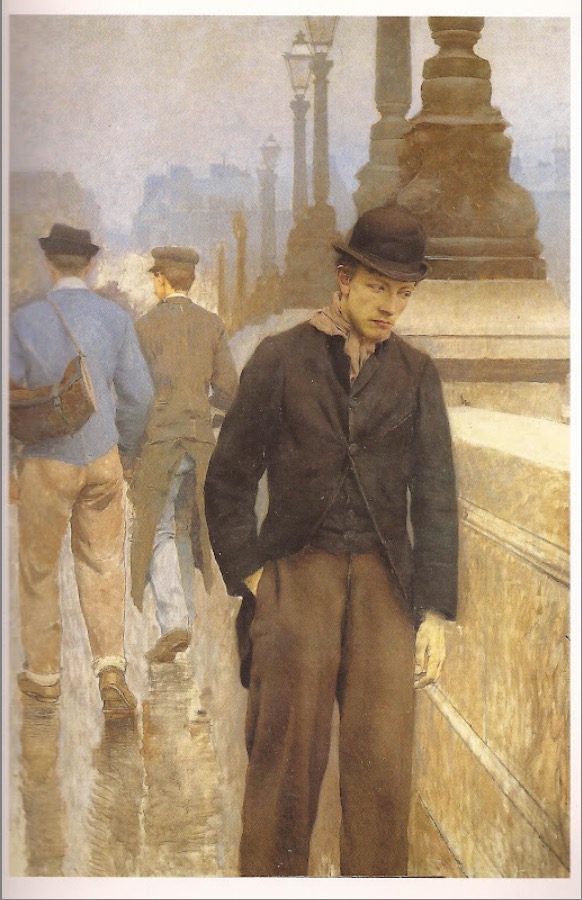
Fig. 5, Victor Leydet, The Desperate One (Le Désespéré), ca. 1897. Oil on canvas. Palais du Roure, Avignon. Artwork in the public domain; available from: Wikimedia Commons.
Nowadays, the concept of nostalgia has become the concern of an interdisciplinary scholarly field sometimes referred to as “nostalgia studies,” that draws jointly from philosophy, psychology, and literary theory. Nostalgia theories abound and have generated a multiplicity of approaches, depending on one’s field of research. The prevailing consensus is that nostalgia is a state of mental discomfort that stems from an individual’s memory, is related to space and time, and triggers interwoven physical and psychological reactions. Nostalgia, the cultural historian Svetlana Boym writes, is “a sentiment of loss and displacement . . . [it is] a superimposition of two images—of home and abroad, past and present, dream and everyday life. The moment we try to force it into a single image, it breaks the frame or burns the surface.”[24] Boym, Future of Nostalgia, xiii. Space, time, recollections, and feelings intersect with an unsteady, shifting ambiguity. Nostalgia, she goes on to write, charts “space on time and time on space . . . it is Janus-faced, like a double-edged sword. To unearth the fragments of nostalgia one needs a dual archeology of memory and of place, and a dual history of illusions and of actual practices.”[25]Boym, Future of Nostalgia, xviii. For literary critic Susan Stewart, nostalgia is a psychological phenomenon that at once distances and reinvents the object of one’s desire. “The nostalgic is enamored of distance, not of the referent itself,” she writes[26]Susan Stewart, On Longing: Narratives of the Miniature, the Gigantic, the Souvenir, the Collection (Durham, NC: Duke University Press, 1993), 145.. One refuses the present and looks always toward a future-past, in a deferment of experience in the direction of origin. In Memory, History, Forgetting, Paul Ricoeur has stressed the association of “place” with memory and nostalgia. The magnitude of “temporal distantiation” from the physical place of desire, he writes, “can itself be perceived, felt, in the mode of regret, of nostalgia.”[27]Paul Ricoeur, Memory, History, Forgetting (Chicago: University of Chicago Press, 2004), 40. But at the same time, nostalgia’s mission becomes the conquest of temporal distance, he adds[28]Ricoeur, Memory, History, Forgetting, 25.. In his book Present Past: Modernity and the Memory Crisis of 1993, Richard Terdiman reflects on nostalgia and memory in relation to modernity and its impact on certain developments of French nineteenth-century culture, from Charles Baudelaire (1821–67) to Proust[29]Terdiman, Present Past, 151–239.. As the literary historian Nicholas Dames sees it, nostalgia is an active mental agent that rebuilds representation into a basically new (and more positive) image. It reshapes and touches up our memories as well as their present look-alikes in order to give them greater authority[30]Nicholas Dames, Amnesiac Selves: Nostalgia, Forgetting and British Fiction, 1810–1870 (Oxford: Oxford University Press, 2001).. Nostalgia is the kind of memory that touches up, reshuffles, and “reconstructs” recollections of the past, the philosopher Maurice Halbwachs agrees[31]Maurice Halbwachs, La Mémoire collective (Paris: PUF, 1968), xii, 57.. According to James Phillips, by the end of the nineteenth century, nostalgia’s trajectory in time had shifted variously from a medicalized, concrete experience of longing for one’s homeland to a “merely symbolic state of mind” that emphasized time rather than space: “Odysseus longs for home; Proust is in search of lost time.”[32]James Phillips, “Distance, Absence and Nostalgia,” in Descriptions, ed. Don Ihde and Hugh J. Silverman (Albany: State University of New York Press, 1985), 65.
An Illusion of the Past in the Present
I approach Cezanne’s nostalgia as that internal, Janus-like, palindromic force that swings unstably between past and present, prompting the painter to select certain motifs (and ignore others) and to apply certain representational strategies that, much like an act of remembrance, re-create the past in the present in the guise of a distorting metaphor that is neither past nor present, a pasteup of time and space, old and new, a misty recollection conflated with lived experience. How does this stealthy emotion manifest itself and affect Cezanne’s works, and with what kinds of metaphors, symbols, subtle allusions, and secret mechanisms did it announce its presence? I concentrate here on the period between 1888 and 1905, the years during which Cezanne lived permanently in Aix while also frequently visiting Paris, where he kept a rented studio, reconnected with his friends, and explored the capital’s vibrant art world. In the late 1880s and 1890s especially, he traveled frequently, not only to the capital but throughout the Île-de-France, farther to the north, south, and east of Paris. For example, we find him in Melun, Médan, Montigny-sur-Loing, Montgeroult, Marines, Chantilly, and Fontainebleau (where he spent almost a whole year); we follow him to Normandy, in Hattenville, where he paid a visit to the collector Victor Choquet (1821–91), and to Giverny in 1894, where he met with his old friend Claude Monet (1840–1926). He strayed even farther, to Vichy in the Auvergne; to Talloires in the Haute-Savoie; to the region of the Marne river; and to Annecy in the southeast, by the Swiss border. In 1890 he spent several months in Switzerland. According to research conducted by François Chedeville and Raymond Hurtu, the total time he invested in his travels outside Provence was no less than ninety-six months, roughly corresponding to eight years[33]François Chedeville and Raymond Hurtu, “Chapitre VII – 1906–1922: Madame Paul Cezanne”, La Sociéte Paul Cezanne (website), January 4, 2109, https://www.societe-cezanne.fr/..
During these constant peregrinations, Cezanne’s longing for Provence soared, as revealed in his letters to his friends back home. In a letter written from Talloires on July 23, 1896, to the sculptor Philippe Solari (1840–1906), for instance, he reminisces about their walks on the slopes of the Sainte-Victoire Mountain as the happiest moments of his youth[34]Cezanne, Letters of Paul Cezanne, 277.. That same year, in a letter to Henri Gasquet, the father of Cezanne’s young friend and biographer Joachim Gasquet (1873–1921), the artist confesses his yearning for Provence’s blue skies, radiant sun, glowing horizons, and the “unbelievably beautiful lines” of its landscapes that had left “such a deep impression on us.”[35]Cezanne’s letter to Gasquet was written in Paris on June 3, 1899. Cezanne, Letters of Paul Cezanne, 297. Characteristically, during these same “mobile” years, he avoided painting Parisian scenes, in contrast to other painters of his circle, such as Camille Pissarro (1830–1903) or Armand Guillaumin (1841–1927). According to Denis Coutagne, of the 365 paintings Cezanne executed in Paris between 1888 and 1905, only one represents a view of the capital, and it focuses only on the roofs of buildings he could see from his window (fig. 6)[36]See Coutagne, “Challenge of Paris for Cezanne” 15–21.. Clearly, the noisy and chaotic metropolis put him off, indeed repulsed him, exactly as it had during his student years.
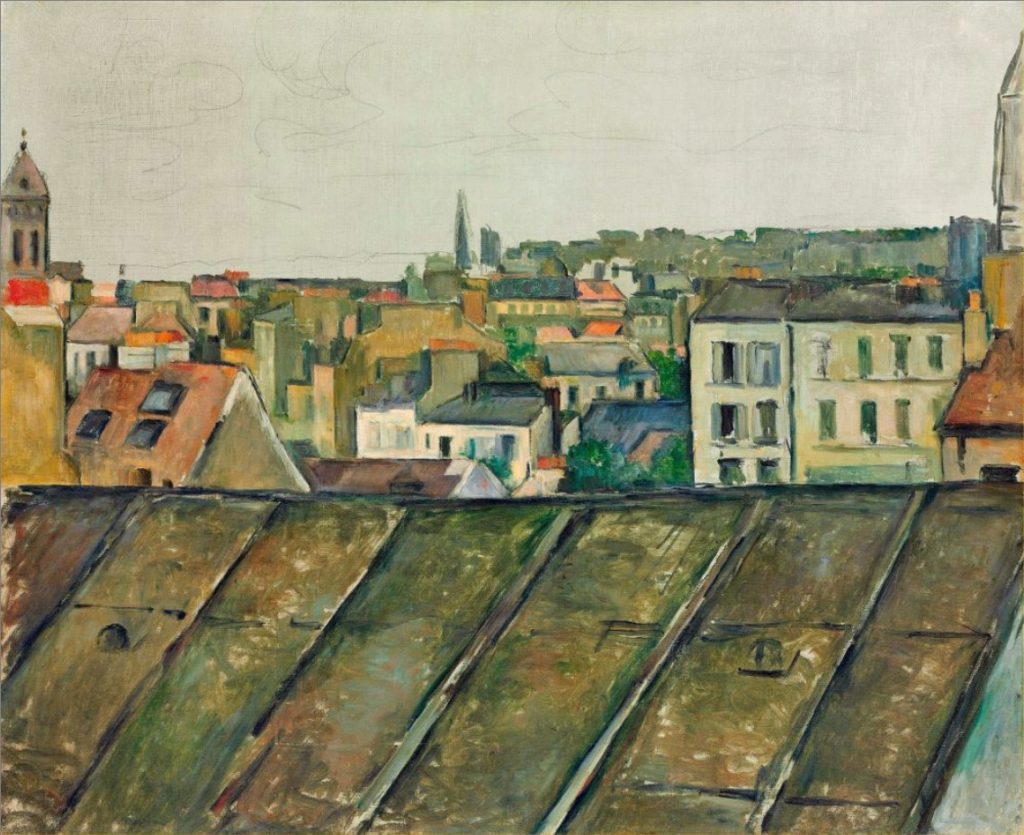
Fig. 6, Paul Cezanne, The Roofs of Paris (Les Toits de Paris), 1882. Oil on canvas. Private collection. Artwork in the public domain; photograph courtesy of Société Paul Cezanne (FWN 178).
Rather than cityscapes fitted with grand palaces and museums, what attracted Cezanne most while in the north of France were traditional villages and modest little towns whose looks revived his memory of the vernacular architecture of the Midi, especially the so-called perched villages (villages perchés), typical southern conglomerates erected on the sides and summits of hills like protective fortresses, consisting of small, whitewashed stone houses with red tile roofs ascending the slopes and surrounding a church on top, whose tall spire rose as the axis of the settlement. Dating from the Middle Ages, these hilltop communities had remained impervious to the modernist and industrial wave that flooded the big cities and were thus seen as the hallmarks of the quintessential French spirit. Small rural hamlets, they also stood as emblems of left-wing, anarchist ideals averse to bourgeois industrial capitalism, ideals to which both Zola and Cezanne would have been sensitive as well[37]In his letters to Zola from Melun in 1879, Cezanne mentions reading left-wing, anarchist newspapers such as Henri Rochefort’s La Lanterne as well as Zola’s article in Le Voltaire about the writer and politician Jules Vallès, a militant anarchist. Cezanne, Letters of Paul Cezanne, 196–98. Small rural communities were embodiments of the anti-industrial, anti-consumer, and rural spirit of anarchist ideology. In the early 1870s, Cezanne had been living in one such rural community, Auvers-sur-Oise, close to the anarchist Camille Pissarro, who lived in nearby Pontoise. There he mingled with the circle of artists and radical thinkers that surrounded the eccentric homeopathic doctor Paul Gachet, including the painters Guillaumin and Jean Baptiste Antoine Guillemet. See Anne Distel and Susan Alyson Stein, eds., Cezanne to Van Gogh: The Collection of Doctor Gachet, exh. cat. (New York: Metropolitan Museum of Art, 1999).. Thus, in the aftermath of France’s defeat in the Franco-Prussian War of 1870, Zola mourned the country’s ravaged soil in an elegiac essay memorializing a humble village as the symbol of both the French nation and its age-old rural tradition:
Where is it, that little village? In what fold of the land does it hide its whitewashed houses? Are they huddled together snugly around the church, or in the depths of a ditch? Or, do they line up happily, along a main road? . . . Does this little village have a name that pleases the ear? Is it a tender name, amenable to French lips or is it some German name, harsh, spiked with consonants, hoarse like a crow? . . . I readily imagine it standing on a hill. It is there, discreetly, amid the trees . . . or rather at the corner of a meadow, on the banks of a stream. It is so tiny that a curtain of poplars hides it from everyone’s eyes . . . we pass next to it without seeing it . . . it sleeps peacefully in its green alcove. . . . Among the crowds of the cities with their resounding names, it is an unknown [site], without a history, without glory and without shame, one that modestly effaces itself. . . . It is so far from the mud and the uproar of the big cities . . . its joy is its silence, its humility, this curtain of poplars that hides it from the rest of the world[38]“Où est-il le petit village? Dans quel plis de terrain cache-t-il ses maisons blanches? Se groupent-t’elles autour de l’église, au fond de quelque creux? Ou, le long d’une grande route, s’en vont-elles gaîment à la file? . . . As-t-il un nom doux à l’oreille, le petit village? Est-ce un nom tendre, aisé aux lèvres françaises, ou quelque nom allemand, rude, hérissé de consonnes, rauque comme un cri de corbeau? . . . Je l’imagine volontiers sur un coteau. . . . Non, je le crois plutôt dans un coin de la plaine, au bord d’un ruisseau. Il est si petit qu’un rideau de peupliers le cache à tous les yeux. . . . On passe à côté de lui sans le voir. . . . Il dort dans la paix, au fond de son alcôve verte. . . . Dans la foule des villes, aux noms retentissants, il est inconnu, sans histoire, sans gloire et sans hontes, qui s’efface modestement. . . . Il est si loin de la boue et du tapage des grandes cités . . . sa joie est faite de son silence, de son humilité, de ce rideau de peupliers qui le cache au monde entier.” Zola, Contes à Ninon et nouveaux contes à Ninon, 373–74..
Already in the 1860s, while living in Paris, Cezanne had experienced a feeling of déjà vu at the sight of such “pyramidal” rural communities while vacationing with his friends Baille, Antoine-Fortuné Marion, Valabrègue, and Zola in the twin villages of Bennecourt and Bonnières (figs. 7, 8), two hamlets facing each other across the banks of the river Seine, in the Yvelines region northwest of Paris[39]On the feeling of déjà vu as related to memory spurred by nostalgia, see Vladimir Jankelevitch, L’Irréversible et la nostalgie (Paris: Flammarion, 1974), 46–47. See also Boym, Future of Nostalgia.. Back in Provence in the mid-1880s, he lived, along with his companion, Hortense, and their son, Paul, in Gardanne in 1885–86, a “perched village” on the Cativel hill, south of Aix (fig. 9).
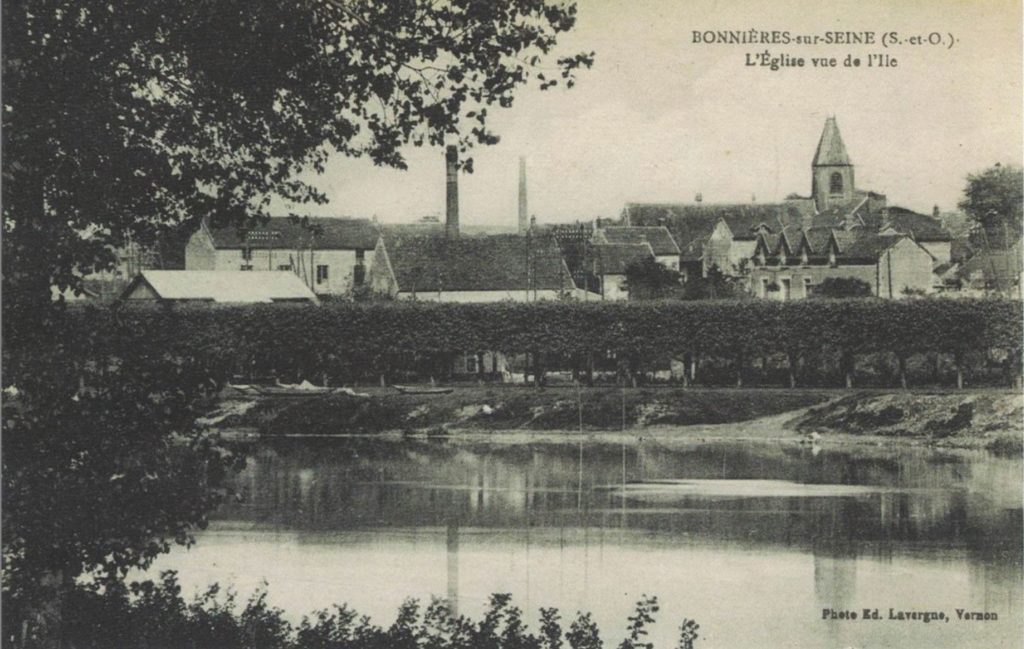
Fig. 7, Photographer unknown, Bennecourt near Bonnières. The Church (Bennecourt, près Bonnières. L’Église), 1866. Postcard. Published in Alain Mothe, Ce que voyait Cezanne: Les Paysages impressionnistes à la lumière des cartes postales, exh. cat. (Paris: Grand Palais, 2011), 84. Artwork in the public domain; photograph by Kim Orcutt.
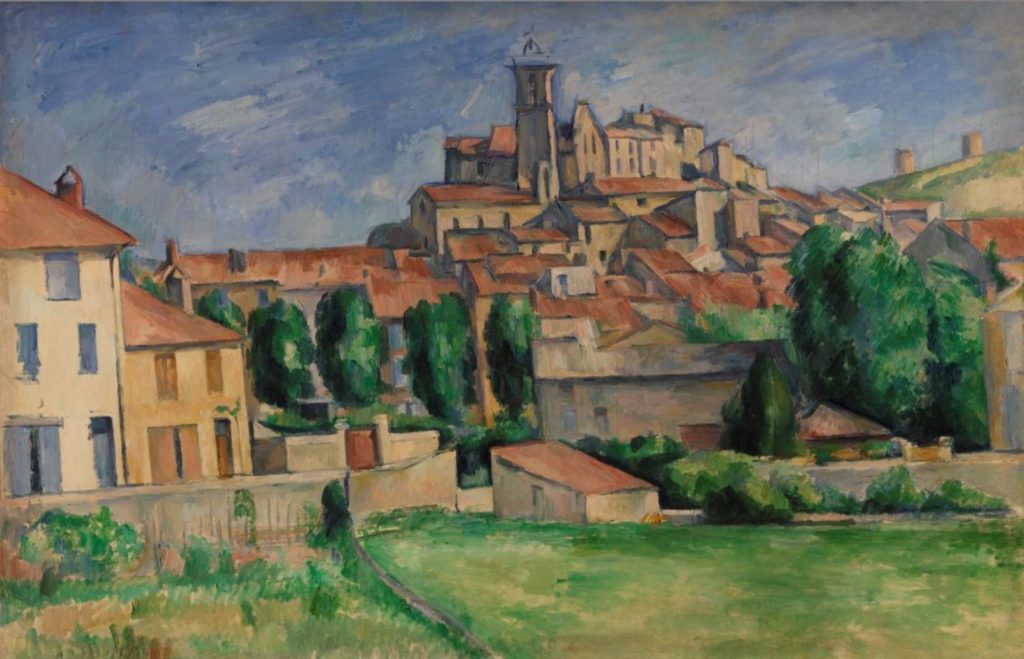
Fig. 9, Paul Cezanne, Gardanne (Horizontal View) (Gardanne [vue horizontale]), ca. 1885. Oil on canvas. Barnes Foundation, Philadelphia. Artwork in the public domain; photograph courtesy of the Barnes Foundation (FWN 224).
In his book Matière et mémoire (Matter and Memory) (1896), an analysis of the process of memory and its relation to external sensorial perceptions, Henri Bergson (1859–1941) reflects on the so-called long duration (longue durée), the persistence of memory’s “images” stored in the subconscious and their sudden resurfacing when triggered by external stimuli[40]Henri Bergson, Matière et mémoire: Essai sur la relation du corps à l’esprit (Paris: F. Alcan, 1896).. Ricoeur has referred to that kind of reminiscence as a “mnemonic mode of recognition” during which “we recognize as being the same the present memory and the first impression intended as other. . . . The small miracle of recognition invests with a sense of presence the ‘otherness’ of that which is over and gone. . . . [Thus] one finds one’s bearings, one feels at ease, at home (heimlich) in the enjoyment of the past revived.”[41]Ricoeur, Memory, History, Forgetting, 39. The sight of Bonnières must have gripped Cezanne’s imagination with an ambiguous sense of both otherness and familiarity, of the present as both other and familiar, a familiarity accompanied by a feeling of comfort, the comfort of home and of nostalgia gratified. Ten years later, Zola would describe their Bennecourt vacation in much the same terms, as an experience that brought back nostalgic memories of his and his friends’ youthful escapades in the Aix countryside: “I remember the time when we took off as a group to discover the Seine, a few miles away from Paris. It was a little hamlet, far from the train, which explained its isolation. The houses were lined up along the high river banks. . . . Suddenly, my whole youth came back alive.”[42]“Toute ma jeunesse s’éveille. Je me rappelle le temps où nous partions en bande pour découvrir la Seine à quelques lieux de Paris.” Zola, “Aux champs,” 676.
These same vernacular settlements would haunt Cezanne during his later travels. They would become the models for his motifs and the guiding force behind his pictorial choices. From April 1879 to April 1880, he lived in Melun and Le Mée-sur-Seine, two small communities across from each other. He painted two views of Melun, one from within its main square—the place de la Préfecture—visible behind a “screen” of identically cropped and barren trees planted in parallel lines (fig. 10); and a second from the far-off viewpoint of Le Mée-sur-Seine (fig. 11). In both paintings, the central church with its belltower rises as the pivot point of the composition. Cezanne’s immutable pattern results in a panoramic and atemporal image, fixed in time and space, as the repository of the nation’s memory and its perennial emblem, impervious to temporal and physical alterations with the iconic finality of a postcard. A similar pattern underlies the layout of Montigny-sur-Loing, a small town in the Seine-et-Oise region, ninety-seven kilometers south of Paris, on one of the tributaries of the Seine. Just as in Bonnières and Melun, in Montigny-sur-Loing the river in the foreground serves as a repoussoir to a church and its tall spire, buttressed by a cluster of small houses[43]See my entries on the churches of Montigny-sur-Loing and Gardanne in the catalogue raisonné Cezanne in the Barnes Foundation, ed. André Dombrowski, Nancy Ireson, and Sylvie Patry (New York: Rizzoli Electa, 2021), 158–65.. While on site in Montigny, Cezanne painted a watercolor (fig. 12). He then made an oil painting done entirely in his studio and with a postcard by his side (fig. 13). In the finished painting, the postcard image had replaced as a model the watercolor done from life, thus fusing live memory and aide-mémoire, direct experience and nostalgic reminiscence (fig. 14).
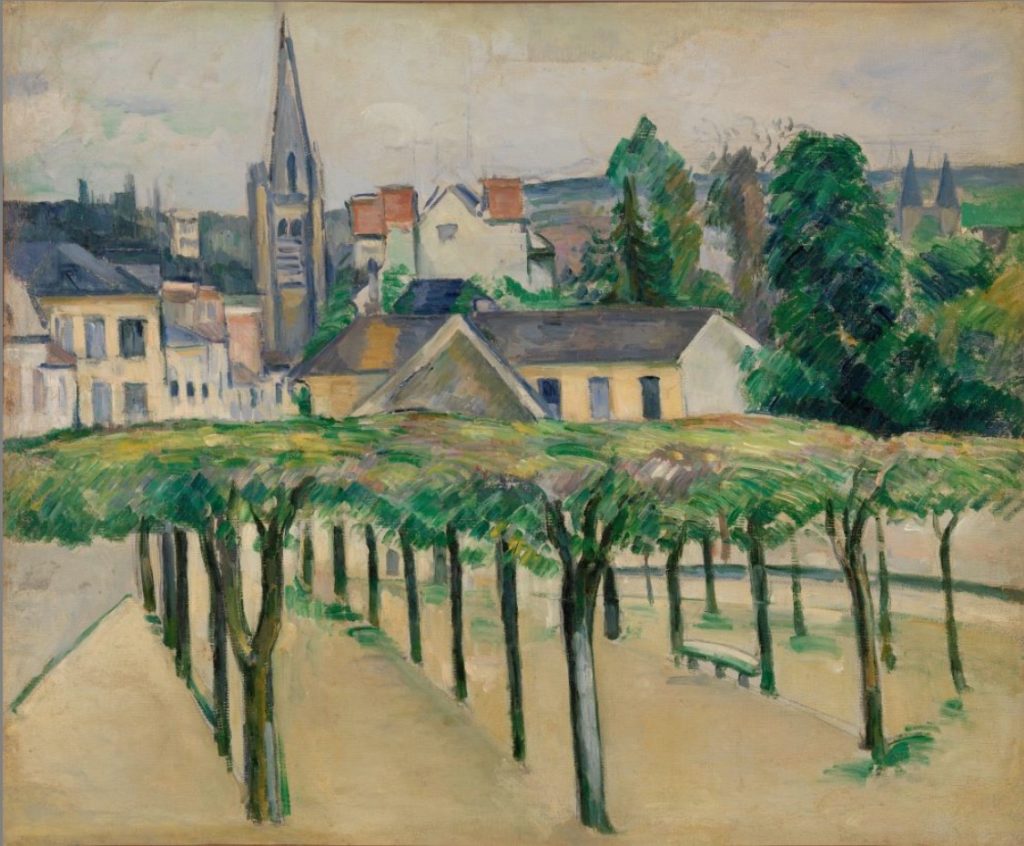
Fig. 10, Paul Cezanne, The Church of Saint-Aspais Seen from the Place de la Préfecture, Melun (L’Église Saint-Aspais vue de la place de la Préfecture à Melun), 1879–80. Oil on canvas. Barnes Foundation, Philadelphia. Artwork in the public domain; photograph courtesy of the Barnes Foundation (FWN 170)
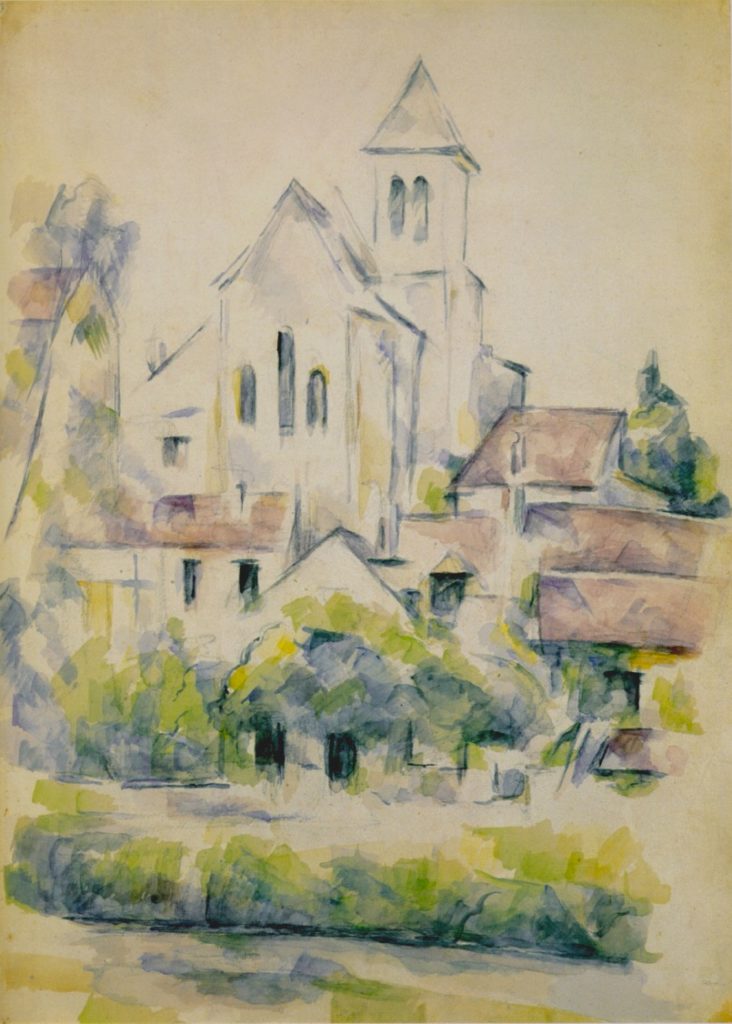
Fig. 12, Paul Cezanne, The Church of Montigny-sur-Loing (L’Église de Montigny-sur-Loing), 1898. Graphite and watercolor on paper. Basil and Elise Goulandris Foundation, Athens. Artwork in the public domain; photograph courtesy of the Basil and Elise Goulandris Foundation (FWN 1423).
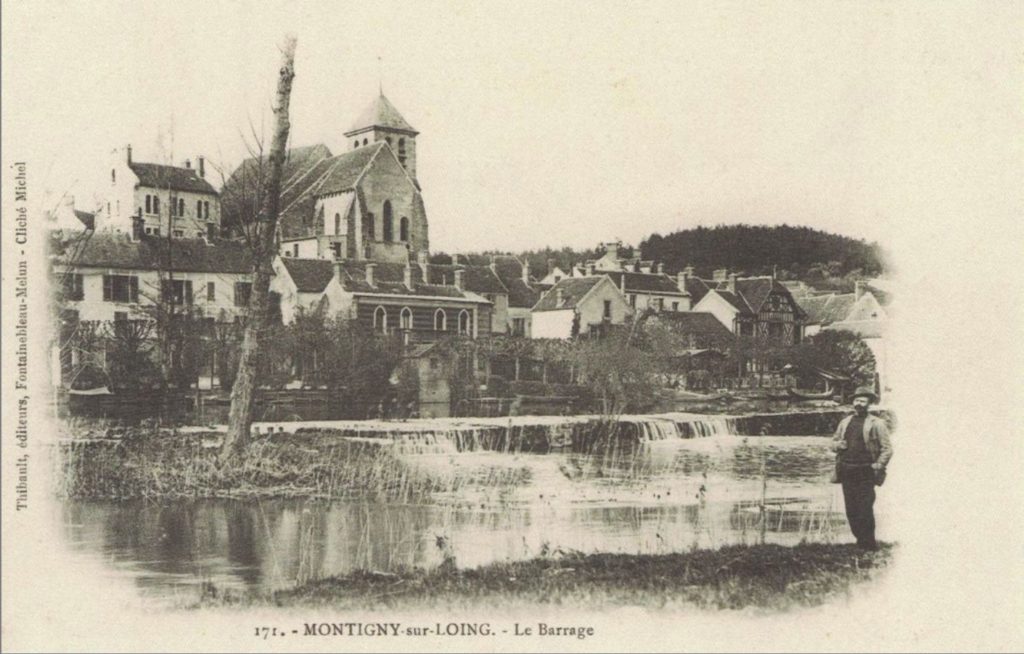
Fig. 13, Photographer unknown, Montigny-sur-Loing. Le Barrage (Montigny-sur-Loing. The Dam), 1898. Postcard. Published in Alain Mothe, Ce que voyait Cezanne: Les Paysages impressionnistes à la lumière des cartes postales, exh. cat. (Paris: Grand Palais, 2011), 104. Image in the public domain; photograph by Kim Orcutt.
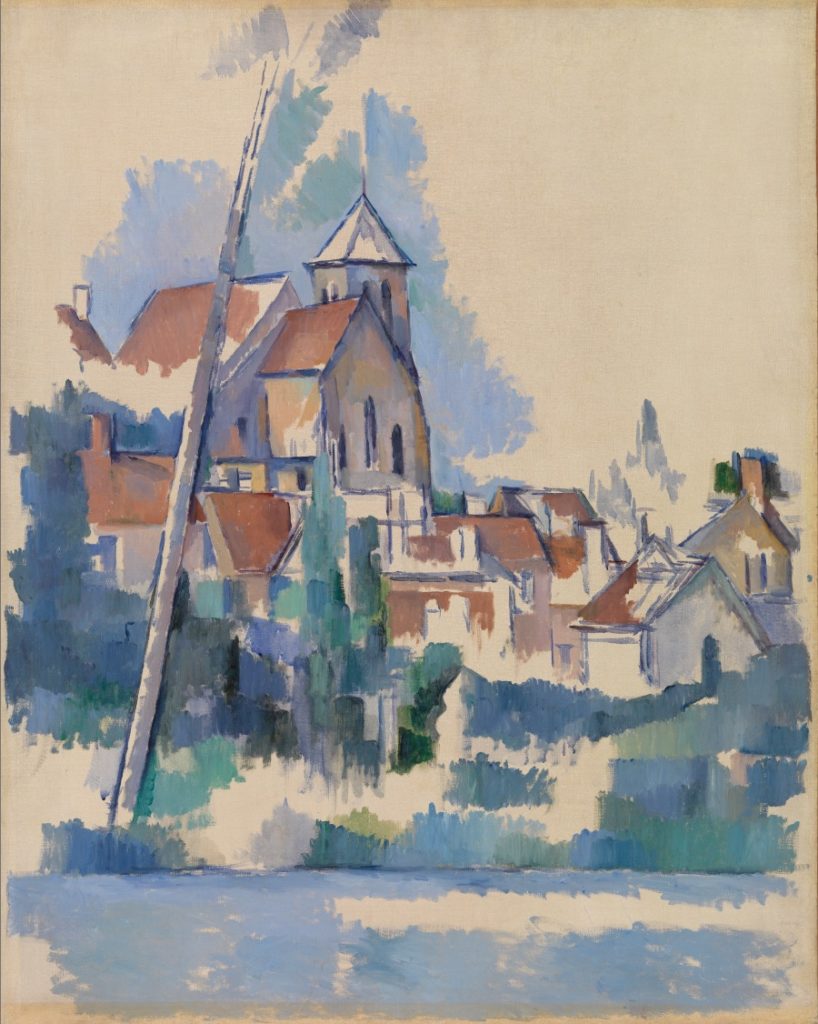
Fig. 14, Paul Cezanne, Church at Montigny-sur-Loing (L’Église de Montigny-sur-Loing), ca. 1898. Oil on canvas. Barnes Foundation, Philadelphia. Artwork in the public domain; photograph courtesy of the Barnes Foundation (FWN 327).
By far the favorite site of memory (lieu de mémoire) for the mobile Cezanne of the 1890s would be the forest of Fontainebleau and its surroundings, approximately seventy kilometers from Paris, a site made famous from the 1830s on by the Barbizon painters, including Jean-François Millet (1814–75), Théodore Rousseau (1812–67), and Charles-François Daubigny (1817–78) as well as early photographers, such as Eugène Cuvelier (1837–1900) and Gustave Le Gray (1820–84). Cezanne’s letters and the testimony of his friends suggest that in 1879 he spent a whole year in the forest, attracted by its lush variety of trees of all kinds: beech, birch, chestnut, juniper, oak, maple and, most of all, pines. He returned to the forest repeatedly from 1892 to 1905. In 1898, Ambroise Vollard (1866–1939) wrote in his address book that the painter lived there permanently. His last visit was in 1905. His Fontainebleau paintings share common motifs, including the large stones lying on the ground and the clusters of slender pine trees that surge up among them. Indeed, he may have chosen that particular section of the forest precisely because of its boulders and pine trees, spurred by memories of his beloved Provençal landscapes.
Art historians have often been puzzled by the affinities between Cezanne’s views of the Fontainebleau forest and those of the Château Noir and Le Tholonet (figs. 15, 16). The similarities between the two sites, as depicted by Cezanne, are indeed striking: boulders lie about on the ground (note, however, the red soil typical of Provence in fig. 15), and slender pines rise above them against a gray-blue sky. One of the typical symptoms of nostalgia, Boym writes, is a sense of geotopical confusion about one’s actual location and the site of one’s imagination[44]Boym, Future of Nostalgia, 5.. For Ricoeur, as for Bergson, nostalgic memory was often driven by imagination and daydreaming: “To call up the past in the form of an image, we must be able to withdraw ourselves from the action of the moment, we must have power to value the useless, we must have the will to dream. Man alone is capable of such an effort.”[45]Ricoeur, Memory, History, Forgetting, 51. A photograph taken by the Swiss-born artist Karl Bodmer (1809–93), a friend of Rousseau’s and Millet’s, shows a solitary Cezanne in the forest of Fontainebleau, seated amid heather leaves and granite boulders as he contemplates the landscape, absorbed as if in a dream, while inhaling the air fragrant with the sweet and pungent scent of the pines that surround him (fig. 17). That scent was bound to bring back in his memory the perfume of the Provençal pine woods, much in the way that the taste of Proust’s famous madeleine dipped in his tea cup brought back youthful memories of doing the same while having a cup of tea in the company of his aunt Léonie, on Sunday mornings in the village of Combray[46]Marcel Proust, À la recherche du temps perdu, vol. 1, Du côté de chez Swann (Paris: Gallimard, 1988), 44..
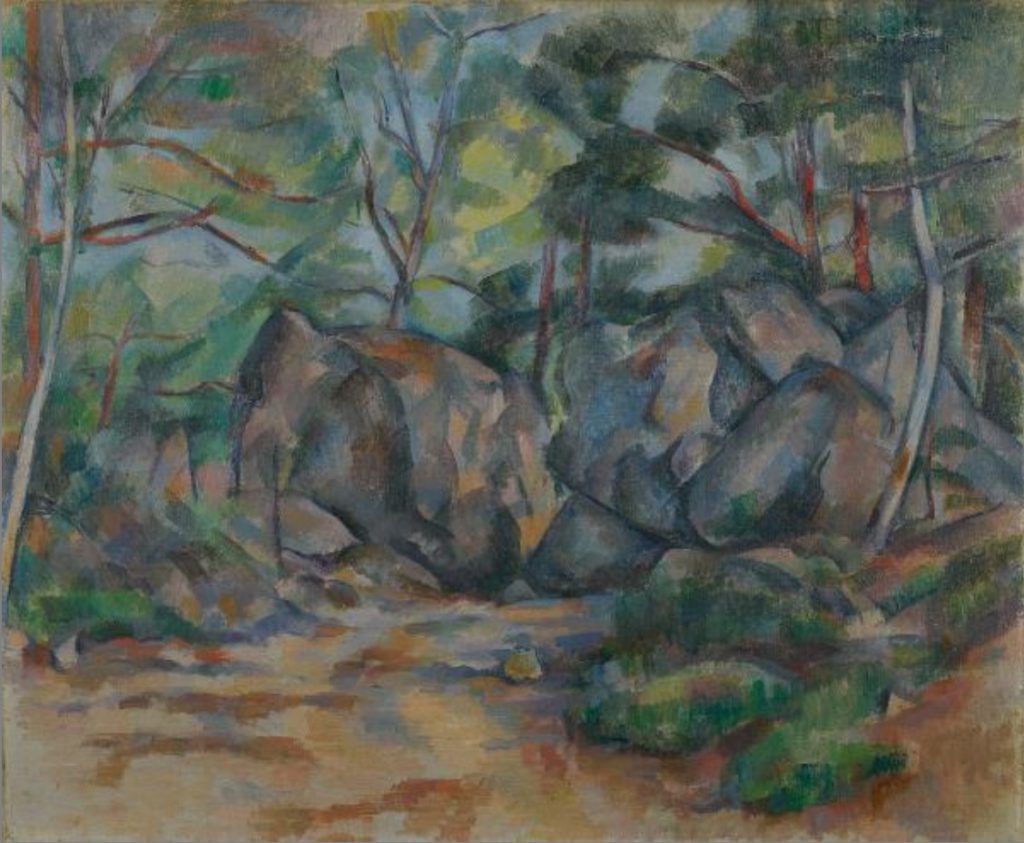
Fig. 15, Paul Cezanne, Rocks in the Woods (Rochers dans le bois), ca. 1893. Oil on canvas. Kunsthaus Zürich, Zurich. Artwork in the public domain; photograph courtesy of Kunsthaus Zurich (FWN 290).
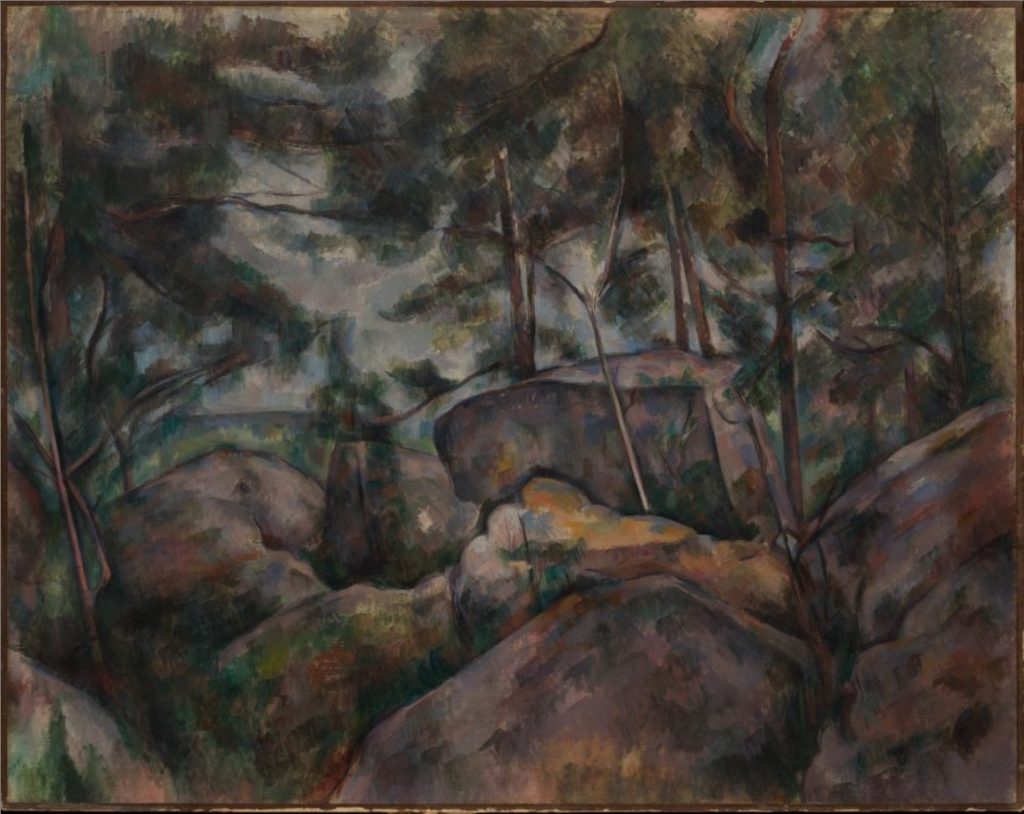
Fig. 16, Paul Cezanne, Rocks at Fontainebleau (Rochers à Fontainebleau), ca. 1890s. Oil on canvas. The Metropolitan Museum of Art, New York. Artwork in the public domain; photograph courtesy of The Metropolitan Museum of Art.(FWN 322).
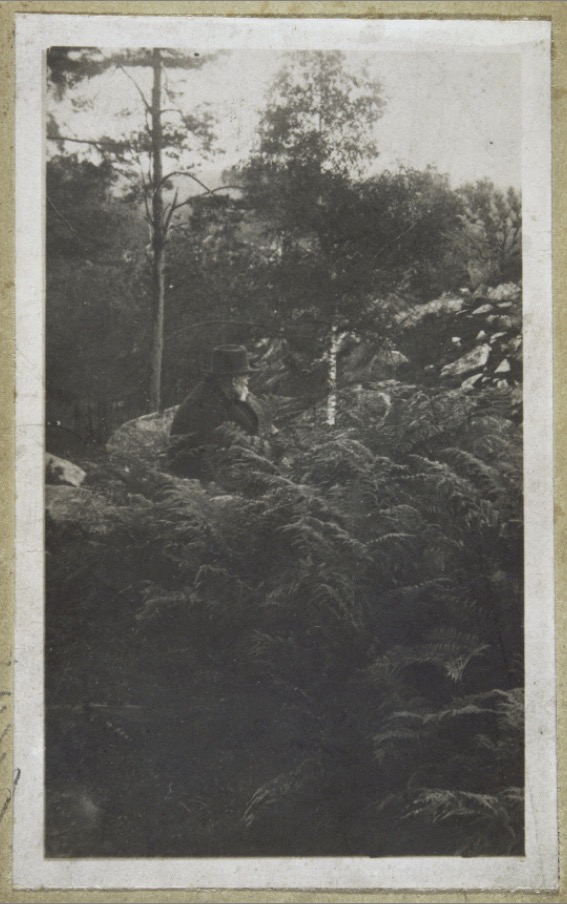
Fig. 17, Karl Bodmer, Cezanne Amid the Heather in the Forest of Fontainebleau (Cezanne au milieu des fougères dans la forêt de Fontainebleau), 1894. Photograph (silver print). Musée d’Orsay, Paris. Image in the public domain; photograph courtesy of theMusée d’Orsay.
Pines, Provence’s emblematic signifiers, were long-lived trees whose roots grew as deeply into the region’s soil as they did into its history and its mythology[47]Cezanne, like Zola and his young friend Joachim Gasquet, revered pine trees as the emblems of Provence. Pine trees were the bearers of memories, both private and historical. They were the anthropomorphic protectors of their youthful years and sympathetic companions and confidants in their old age. And they rose as the proud symbols of Provence, as the locus of its revived Virgilian Golden Age and of a mighty Latin race. See Smith, “Joachim Gasquet, Virgil and Cezanne’s Landscape.” Smith stresses that after his meeting with Gasquet in the 1890s, Cezanne’s affinity with pine trees intensified.. In his letters to his childhood friends, Cezanne spoke of his quasi-mystic affinity with pines, and of pines as anthropomorphic and protective sylvan deities sharing human concerns and feelings. As he wrote in a letter to Zola in 1858: “Do you remember the old pine . . . , planted on the banks of the Arc river, lowering its leafy head over the chasm that opened at its feet? . . . That pine that protected our bodies with its foliage against the heat and the sun.”[48]The letter is dated April 9, 1858. Cezanne, Letters of Paul Cezanne, 47. Gasquet writes that even as an older man, Cezanne still spoke of “the wisdom of trees” (la sagesse des arbres) and mentioned an olive tree as among his closest friends[49]Cezanne, exh. cat. (Paris: Réunion des Musées Nationaux, 1995), 372..
We find this vitalist attitude toward nature and trees also reflected in the writings of the philosopher Jules Lachelier (1832–1918). Born in Fontainebleau, Lachelier was a disciple of the philosopher Félix Ravaisson (1813–1900), a leading figure in the Spiritualist movement that dominated French philosophy in the second half of the nineteenth century[50]Spiritualism emphasized the primacy of the intellect or spirit, and aspired to an interpretation of the world through the activity of the mind. Ravaisson coined the name “Spiritualist Positivism” in order to underscore that the new Spiritualist movement was grounded in the mind’s and nature’s reality, and shunned metaphysical assumptions and a priori notions. Ravaisson wrote: “There are many indications leading us to forecast the imminent advent of a philosophical era whose general characteristic would be the predominance of what we called a realism or spiritualist positivism, founded on the awareness the mind acquires within itself of a ‘being’ from which . . . all other ‘being’ derives and depends, [a being] that is none other than its own activity.” Félix Ravaisson, La Philosophie en France au dix-neuvième siècle (Paris: Hachette, 1895), 275.. Lachelier taught at the École Normale Supérieure from 1864 to 1875. Among his students was Bergson. Like Zola and Cezanne, Lachelier’s reflections on pine trees are cast in the form of a dream or a memory, with pantheistic, animist, and transformist overtones that intimate the philosopher’s integrated, monist vision of nature as a unity of humans, animals and plants[51]Nina Athanassoglou-Kallmyer “‘Like a Dog, Just Looking’: Cezanne, Innocence, and Early Phenomenological Thought in Nineteenth-Century France,” in A Companion to Nineteenth-Century Art, ed. Michelle Facos (Hoboken, NJ: John Wiley and Sons, 2019), 159–74. See also my book Art and Monist Philosophy in Nineteenth-Century France: Auteuil to Giverny (Abingdon, UK: Routledge, 2023).:
It seems to me that I am in Fontainebleau, that I sympathize with all my might with the powerful vitality of the trees that surround me. As to reproducing their form in myself, I am without doubt too encrusted in my own for that; but on reflecting well over it, it did not seem to me unreasonable to suppose that all the forms of existence sleep more or less buried in the depths of each being; for under the well-fixed traits of the human form in which I am clothed, a somewhat piercing eye should recognize without difficulty the vague contour of animality, which veils in its turn the still more floating and undecisive form of simple organization: that is, one of the possible determinations of organization is tree-ness which engenders oak-ness in its turn. The oak-ness is hidden to some extent in my depths, . . . although humanity, which has taken precedence over it, would forbid it and would bar the way[52]Quoted in Ben-Ami Scharfstein, Roots of Bergson’s Philosophy (New York: Columbia University Press, 1943), 51–52 (emphasis in original). For Lachelier’s influence on Bergson as manifest in this excerpt, see Jules Lachelier, Oeuvres de Jules Lachelier, vol. 1 (Paris: Félix Alcan, 1933), xviii–xix..
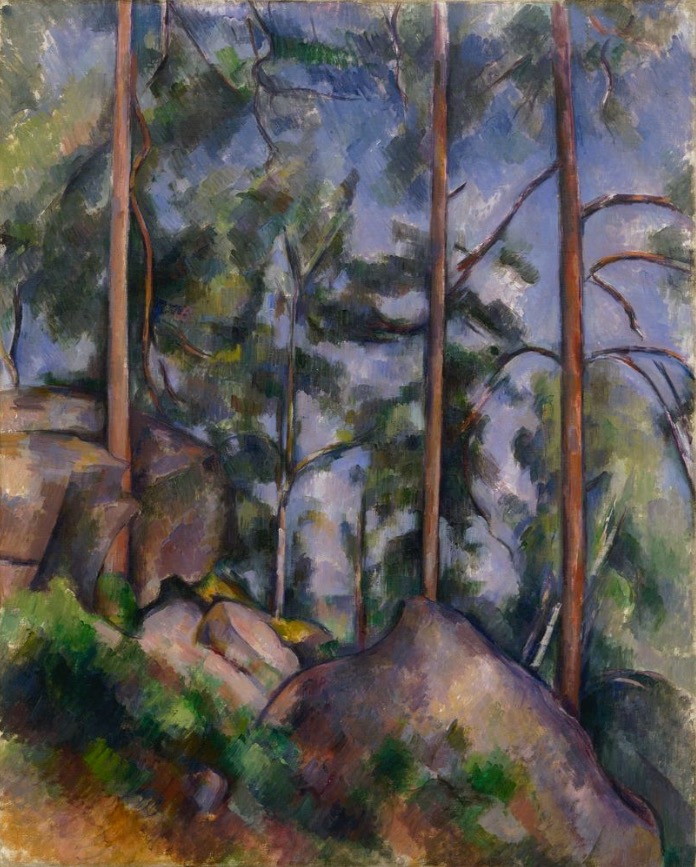
Fig. 18, Paul Cezanne, Pines and Rocks (Fontainebleau?) (Pins et Rochers [Fontainebleau?]), 1897. Oil on canvas. Museum of Modern Art, New York. Artwork in the public domain; photograph courtesy of Wikimedia Commons (FWN 323).
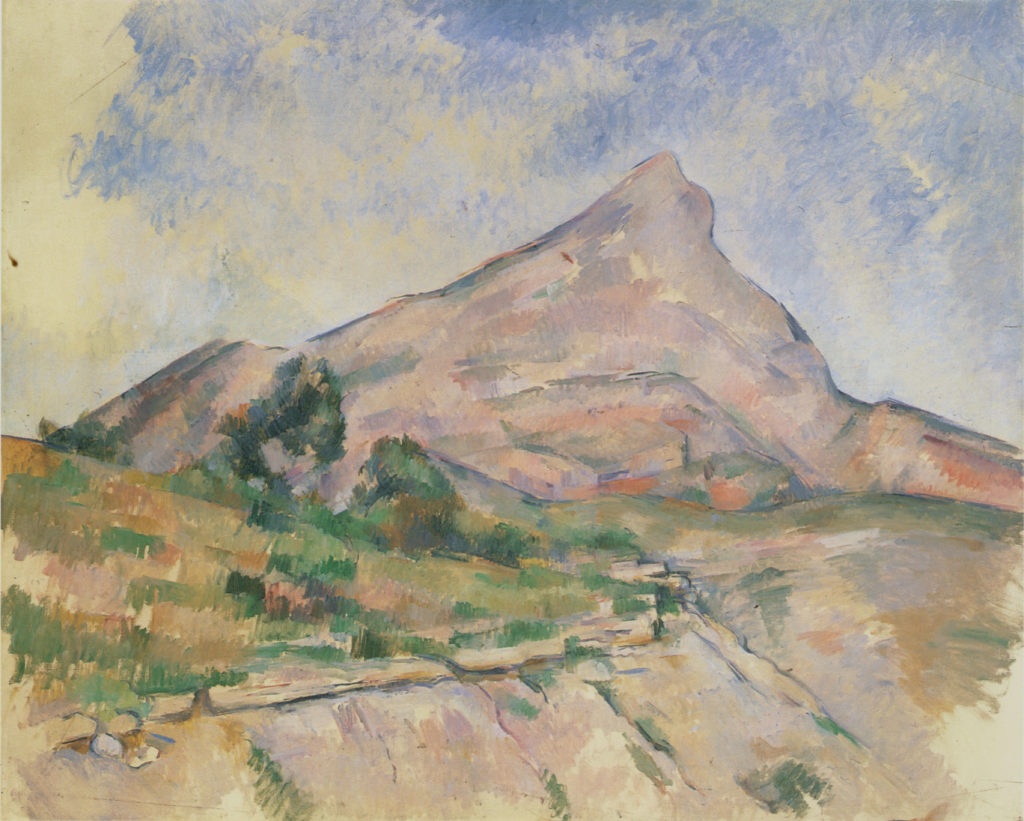
Fig. 19, Paul Cezanne, Mount Sainte-Victoire Seen from Les Infernets (La Montagne Sainte-Victoire vue des Infernets), 1895. Oil on canvas. State Hermitage Museum, St. Petersburg. Artwork in the public domain; photograph courtesy of Société Paul Cezanne (FWN 295).
Both Lachelier and Cezanne wrote while in a state of longing: Lachelier for his Fontainebleau pine forest and the sense of oneness with nature that he experienced; Cezanne for his Provençal woods as a mnemonic resurgence seen through the “screen” of Fontainebleau. And both assimilated themselves with nature’s beings in a spirit of pantheistic and vitalist amalgamation. Encapsulating such a nostalgic merger of locations, Cezanne’s Fontainebleau painting at the Museum of Modern Art in New York reveals among its ferns and tree trunks a half-hidden rock whose triangular design uncannily repeats the Sainte-Victoire Mountain’s shape, albeit in miniature form (figs. 18, 19)[53]John Elderfield, ed., Cezanne: The Rock and Quarry Paintings, exh. cat. (Princeton, NJ: Princeton University Art Museum; New Haven, CT, and London: Yale University Press, 2020), 100.. Extracted from its context, inverted and reduced to a miniscule size, the rock stands as a condensed version of the mountain, a “sample” of the mountain as a “souvenir,” an “object of desire”—in Stewart’s words—analogous to the cheap plaster mementoes of famous ancient sculptures purchased as souvenirs by tourists: “The souvenir speaks to a context of origin through a language of longing . . . it is an object arising out of the insatiable demands of nostalgia. The ‘souvenir’ is an object that mediates experience in time and space and collapses distance to proximity with one’s self. Absence and desire are part of the souvenir’s generating mechanism. The souvenir is always incomplete, a sample, a part that stands for the whole.”[54]Stewart, On Longing, ix, xii, 23, 135. The souvenir’s purpose is to serve as a trace of a past experience and to reawaken lived moments in the viewer’s imagination. According to the philosopher Vladimir Jankelevitch, its unexpected presence becomes the symbolic receptacle (and the proof) of the artist’s retroactive desire, spurred by “the painful feeling of that nostalgia” (le point douloureux de cette nostalgie), a fleeting illusion of a reality located both elsewhere and nowhere[55]Jankelevitch, L’Irréversible et la nostalgie, 293.. One could even see the pyramidal rock’s emblematic presence as the seal, the secret signature, and alter ego of Cezanne’s nostalgia, the token of his loyalty to his homeland through its iconic mountain cast in the guise of a witty rebus, such as those that filled his youthful letters to Zola[56]On Cezanne’s humor and witty rebuses, especially in his early letters to Zola, see Athanassoglou-Kallmyer, Cezanne and Provence, 55–87..
Rebuilding the Real
Combined nostalgia and memory act as restorative powers of a reminiscence whose image begins to fade as time goes by. But this image is hardly an accurate recollection of the original in the first place. Between the object experienced and its referent there is no continuity, Stewart argues[57]Stewart, On Longing, 145.. One cannot expect to get an accurate image of the object of desire reproduced in the present. “Nostalgia is a kind of memory that reshuffles and reconstructs recollections of the past,” Jean Duvignaud confirms in his preface to Halbwachs’s book[58]Jean Duvignaud, preface to Halbwachs, La Mémoire collective, xii. Duvignaud notes that Halbwachs demonstrates that in order to reconstruct individual or collective memory, one must always take into account the real social and spatial framework of a particular memory.. The memory of a distant past is rebuilt like a “collage” by using bits and pieces of the present. Cezanne’s visual language is rife with ambiguity, metaphor, and analogy. “One thing is made to look like, or somehow be like, another, despite the differences that otherwise obtain,” notes Richard Shiff[59]Richard Shiff, “Cezanne’s Physicality: The Politics of Touch,” in The Language of Art History, ed. Salim Kemal and Ivan Gaskel (New York: Cambridge University Press, 1991), 142–44.. Was such ambiguity deliberate or spontaneous, a willful strategy contradicting conventional expectations or an unconscious mnemonic surge of the past into the present, as Bergson conceived it? Cezanne’s landscapes done in Chantilly, subtly manipulated and retouched in order to signify an “other” reality, are a case in point, albeit one that further obscures and prolongs the quandary rather than resolving it[60]See John Elderfield, “Ambiguities,” in Elderfield, Cezanne: The Rock and Quarry Paintings, 12–15; and Alexander Eiling, ed., Cezanne: Metamorphoses, exh. cat. (Munich: Prestel; Karlsruhe: Staatliche Kunsthalle Karlsruhe, 2017)..
From June to November 1888, Cezanne lived in Chantilly, fifty kilometers north of Paris. One of his favorite motifs was the historical estate of the princes of Condé, which had been restored during the July Monarchy by the duc d’Aumale, the son of King Louis-Philippe (1773–1850). Cezanne completed three views of the Chantilly grounds and palace (fig. 20). All three represent the same view, an alley flanked by two parallel rows of trees whose foliage leans inward, meeting in the form of a gothic arch that, in the distance, frames a partial view of the palace. The pictures are, at first glance, uncanny mirror images of the chestnut alley at Jas de Bouffan, a motif Cezanne had painted numerous times before (fig. 21). This superimposition and fusion of two distinct visual experiences—the alley of the Jas and that of Chantilly—represents both the culmination and “the danger of nostalgia,” according to Boym, the nostalgic individual’s desperate tendency “to confuse the actual home and the imaginary one. In extreme cases it can create a phantom land, for the sake of which one is ready to die or kill.”[61]Boym, Future of Nostalgia, xvi. But in his study on the irreversible nature of time in relation to nostalgia, Jankelevitch argues that, subconsciously aware of the difference between the original and the déjà vu, the nostalgic individual intuitively inserts subtle modifications in the duplicate view. “It is in this way that the second experience re-enacts the memory of the first one, by transforming it: along with the repetition and the da capo, the viewer thus has the impression that he rediscovers an old friend, albeit within a new setting,” he writes[62]Jankelevitch, L’Irréversible et la nostalgie, 46–47..
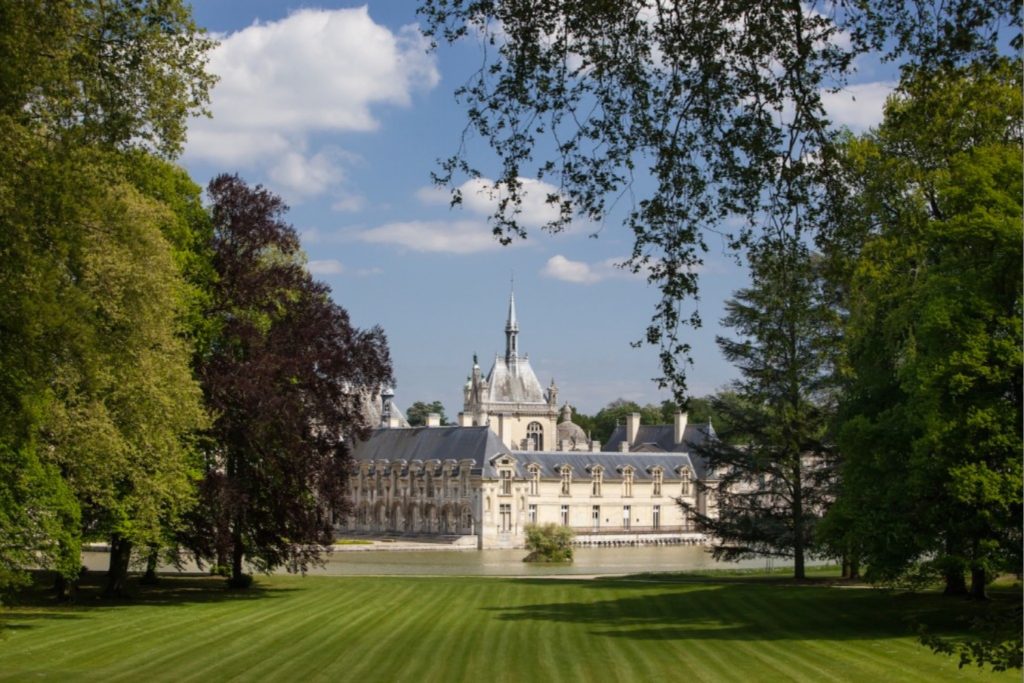
Fig. 20, Gary Lee Kraut, Untitled photograph, 2011. Published in “Photolog: A Daytrip to the Chateau de Chantilly,” France Revisited, October 17, 2011. Published under fair use.
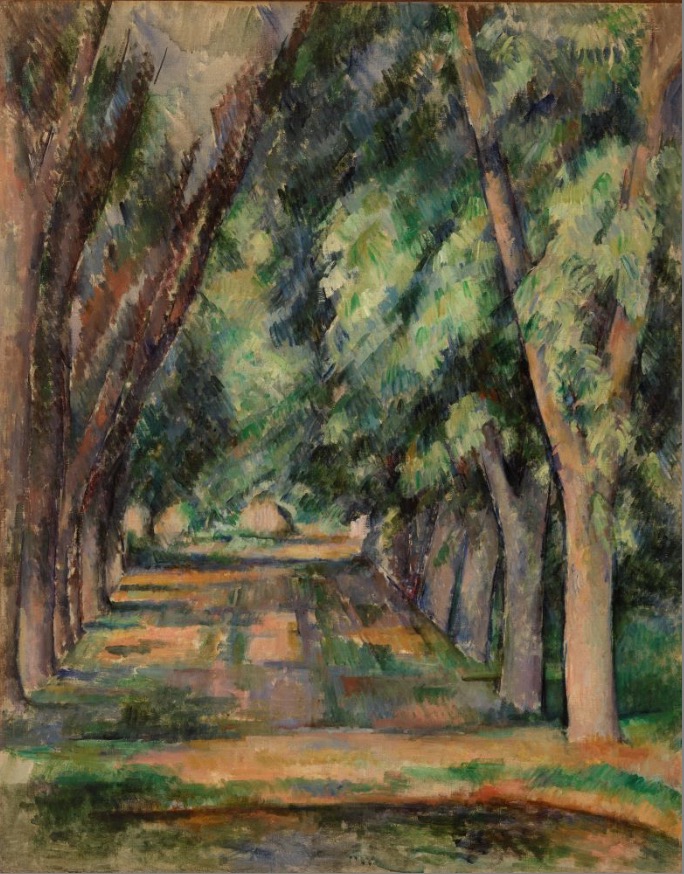
Fig. 21, Paul Cezanne, The Allée of the Chestnut Trees at the Jas de Bouffan (L’Allée des marronniers au Jas de Bouffan), 1886–87. Oil on canvas. Barnes Foundation, Philadelphia. Artwork in the public domain; photograph courtesy of the Barnes Foundation (FWN 243).
In the Chantilly pictures, Cezanne followed such a mnemonic path by subtly purging his motif from its particularities, divesting it of its “otherness” in pursuit of a more generic look. For example, in the painting at the Toledo Museum of Art, the one most likely created first, the alley seems shorter and condensed, flanking a path that leads the viewer directly to the palace, the latter clearly visible and framed by the trees (fig. 22). On the other hand, the view in the painting at the National Gallery in London emphasizes the alley by extending its length and dividing it into two sections: one in the foreground, inviting the visitor to enter; the other in the middle ground, leading to a virtually invisible palace in the remote distance, evoked only by a couple of isolated orange and gray brushstrokes (fig. 23). In fact, in the final version, in a private collection (fig. 24), the palace has been eliminated; distance has been compressed; space is more compact; the alley occupies the whole surface of the canvas; and the foliage is dense and impenetrable, barring the view to the other side. Placed next to each other, the Jas de Bouffan picture and the last of the three paintings from Chantilly are difficult to distinguish; only the discreet presence of orange-colored soil in the former sets them apart.
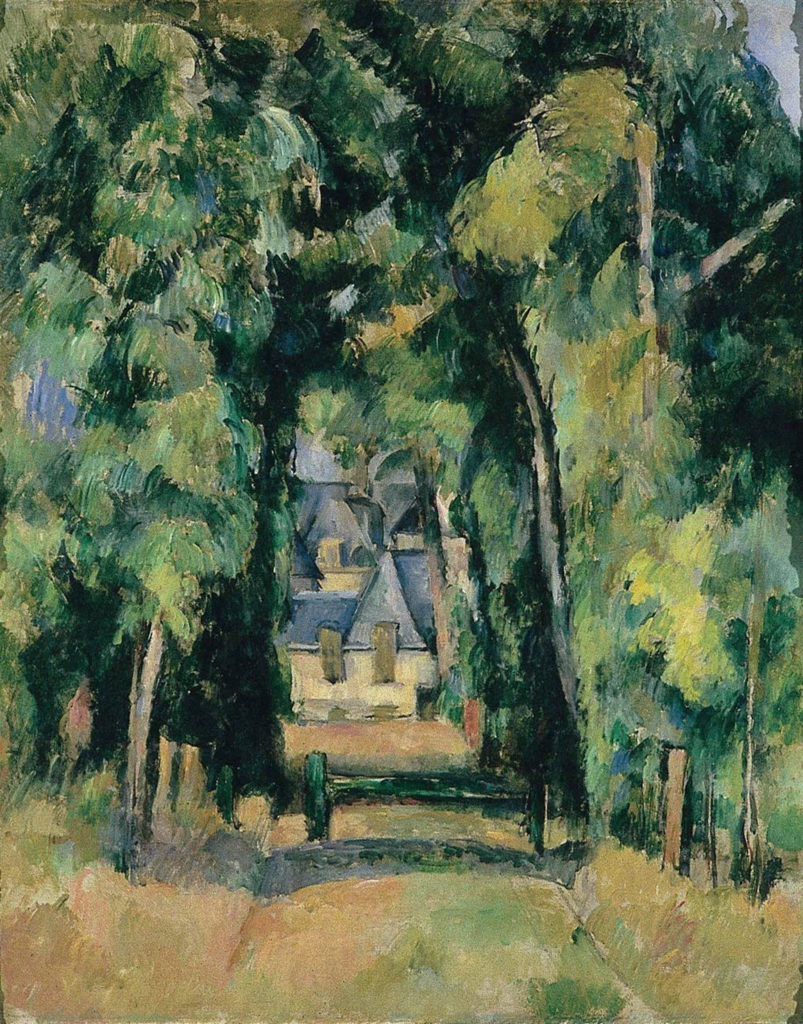
Fig. 22, Paul Cezanne, Avenue at Chantilly (L’Allée à Chantilly), 1888. Oil on canvas. Toledo Museum of Art, Toledo. Artwork in the public domain; photograph courtesy of the Toledo Museum of Art (FWN 244).
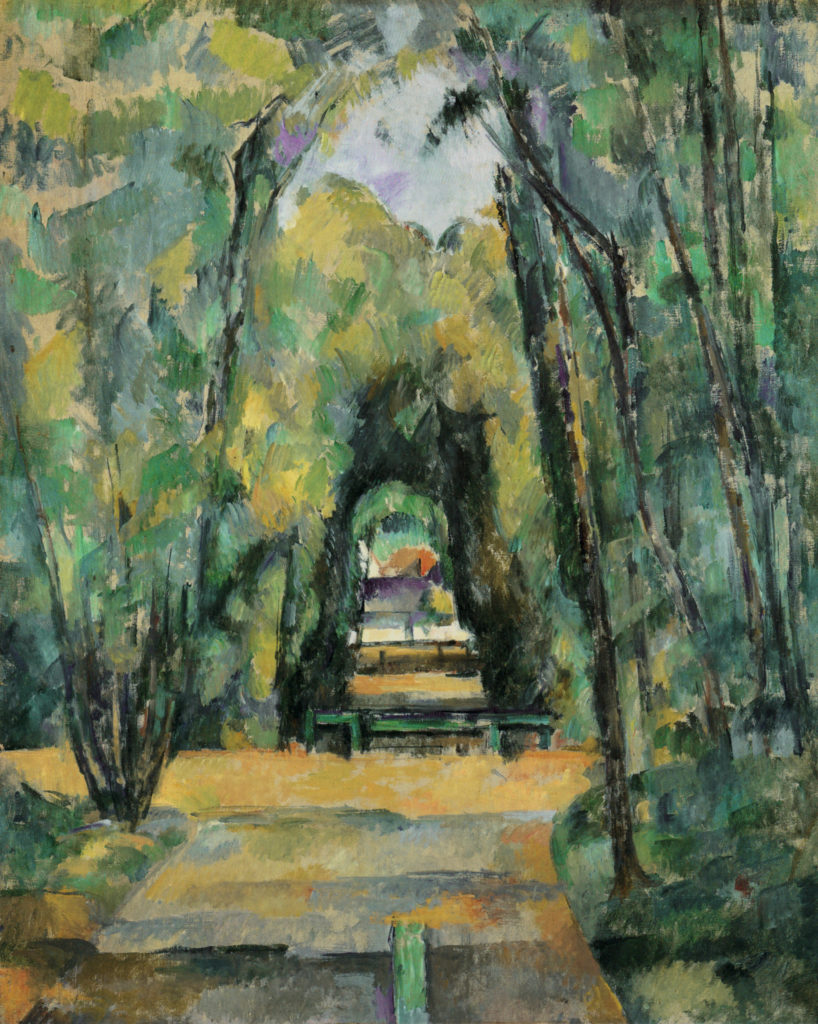
Fig. 23, Paul Cezanne, Avenue at Chantilly (L’Allée à Chantilly), 1888. Oil on canvas, National Gallery, London. Artwork in the public domain; photograph courtesy of the National Gallery (FWN 245).
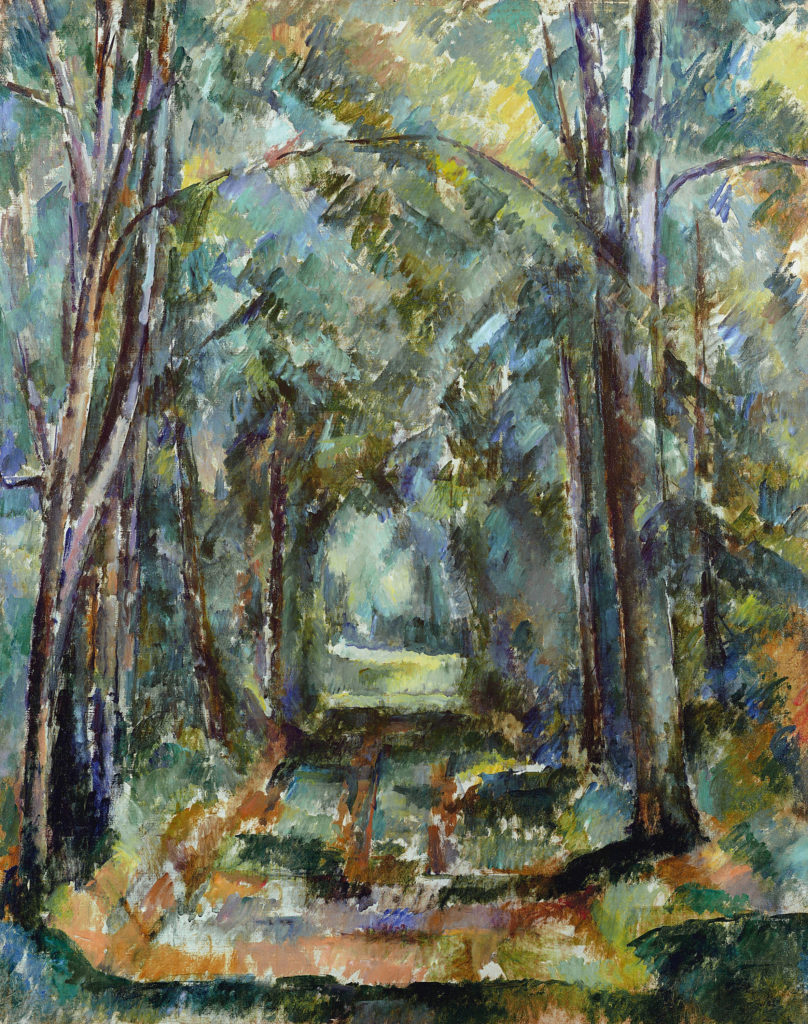
Fig. 24, Paul Cezanne, Avenue at Chantilly (L’Allée à Chantilly), 1888. Oil on canvas. Private collection, New York. Artwork in the public domain; photograph courtesy of Société Paul Cezanne (FWN 246).
By gradually adjusting and abstracting his motif in the three Chantilly canvases, Cezanne transformed his actual location, the Chantilly park, into a mirage of his remote home in Provence, the metaphoric and symbolic abode of his longing. His process of restoring the past while looking at the present reiterates the Janus-like, palindromic temporal and spatial course of nostalgia. In his letter from Talloires to Solari, on July 23, 1896, he confided his ambivalent state of mind: “When I was in Aix, I had the feeling that I’d be better off somewhere else; now that I’m here, I miss Aix.”[63]Cezanne, Letters of Paul Cezanne, 277. His words resonate with the ambivalent overtones of Jankelevitch’s definition of nostalgia: “Nostalgia is a human melancholy that is an awareness of a contrast between a past and the present, between the present and the future. . . . The nostalgic person is at once here and over there, neither here nor there, present and absent at the same time, twice present, twice absent. . . . The exile lives therefore a double life.”[64]Jankelevitch, L’Irréversible et la nostalgie, 280–81.
Seduced by the attraction of the new, the traveling Cezanne wavered, undecided. But in the end, homesickness and nostalgia had the upper hand. A few lines later in the same letter to Solari, Cezanne demurred: “But when you’re born down there [in Provence], that’s it, there is nothing more to be said.”[65]Cezanne, Letters of Paul Cezanne, 277.
Acknowledgments
This article began as a lecture I was invited to give at the opening of the exhibition in 2020 titled Cezanne: The Rock and Quarry Paintings, curated by John Elderfield at the Princeton Art Museum. Both the exhibition and the conference were canceled due to the COVID-19 pandemic. My thanks to the two anonymous readers of my text for their helpful comments and insights, and to Robyn Roslak for her excellent copyediting.
Notes
All translations, unless otherwise noted, are my own.
Références
| ↑1 | Baptistin Baille, born in Aix, became a brilliant scientist following his studies at the École Polytechnique in Paris. He was a close childhood friend of Cezanne’s and Zola’s and shared their escapades and swimming sprees in the countryside of Aix. Although a scientist, he also took part in Cezanne and Zola’s exchanges of opinion on poetry, literature, and painting, as evident from their letters of the 1860s. Baille’s period photographs show him clad in the mandatory military uniform of a polytechnicien, impeccably groomed, with closely cropped hair and a perfectly trimmed goatee and mustache.
Antonin Valabrègue was a poet and art critic born in Aix, like his friends Zola, Cezanne, and Baille. He studied in Paris, and, after a brief return to Aix, settled in Paris permanently beginning in the mid-1860s. His poems and essays were published in journals and literary collections, including L’Artiste, Le Parnasse contemporain, and La Revue bleue, among others. His portraits by Cezanne show him with a beard; wavy, medium length, unkempt dark hair; and wearing a loose, dark jacket over his droopy shoulders. In his account of 1878, Zola identifies only himself (lying on the grass, with a book at his side) and Cezanne (smoking his pipe while meditating on his study for a painting and staring at the canvas sail of a boat). |
|---|---|
| ↑2 | “Un calme profond, une paix souveraine endormait ce trou clair. On songeait au bain de la Diane antique trempant ses pieds de neige dans les sources ignorées du bois. . . . La mare verte avait fini par devenir le but de toutes nos promenades. . . . Nous l’aimions d’amour, passant la journée du dimanche sur l’herbe fine qui l’entourait. Paul avait commencé une étude . . . moi je m’étendais sur le dos un livre à mon côté; mais je ne lisais guère, je regardais le ciel à travers les feuilles. . . . Quand nous sortions du bois, c’était comme un réveil.” Émile Zola, “Aux champs,” in Contes et nouvelles, ed. Roger Ripoll (Paris: Gallimard-NRF, 1976), 673–74. |
| ↑3 | For Provence reimagined as an Arcadia, see Nina Athanassoglou-Kallmyer, “Arcadia,” chapter 5 in Cezanne and Provence: The Painter in His Culture (Chicago: University of Chicago Press, 2003), 187–231. |
| ↑4 | “des pins tordus poussent entre les rochers; par les jours brûlants de juillet on pourrait se croire dans un coin perdu de la Provence.” Zola, “Aux champs,” 671. Zola, like Cezanne, viewed pine trees as emblematic of Provence and the opposite of Paris. In a letter to Cezanne of June 14, 1858, Zola writes that in Paris “one finds no age-old pine tree,” and goes on to say: “I prefer Aix to Paris. Is it because of the trees swaying in the breeze?” Quoted in Paul Smith, “Joachim Gasquet, Virgil and Cezanne’s Landscape: ‘My Beloved Golden Age,’” Apollo 148 (October 1998): 13. |
| ↑5 | “Je m’attendais à une succession de palais, . . . la lourde voiture roulait entre des constructions borgnes, des cabarets, des maisons suspectes . . . puis on s’enfonçait dans des rues noires.” Zola, “Aux Champs,” 664. |
| ↑6 | “Paris est triste à l’oeil comme une duègne réchinée . . . le sol est couvert de boue, le ciel de nuages, les maisons d’un villain badigeon, les femmes de fard de toutes le couleurs. Ici avant le visage il y a toujours un masque.” Letter from Zola to Cezanne, January 16, 1860, in Émile Zola, Correspondance (1858–71), ed. Maurice LeBlond, vol. 1 (Paris: Bernouard, n.d.), 30. |
| ↑7 | “Et quelles laideurs!,” Émile Zola, “Souvenirs,” in Contes à Ninon et nouveaux contes à Ninon (Paris: F. Bernouard, 1874), 478–79. |
| ↑8 | Zola, “Souvenirs,” 478–79. |
| ↑9 | “C’était pour nous l’oubli de tout, l’oubli de Paris, l’entrée dans le paradis rêvé pendant les six jours de la semaine.” Zola, “Aux champs,” 669–70. |
| ↑10 | Paul Cezanne, The Letters of Paul Cezanne, ed. and trans. Alex Danchev (Los Angeles: J. Paul Getty Museum, 2013), 107. See also Denis Coutagne, “The Challenge of Paris for Cezanne,” in Cezanne and Paris, exh. cat. (Paris: Musée du Luxembourg, 2011), 15. |
| ↑11 | Paul Cezanne, letter to Numa Coste, January 5, 1863, in Cezanne, Letters of Paul Cezanne, 112; and Paul Cezanne, letter to Numa Coste, July 18, 1868, in Cezanne, Letters of Paul Cezanne, 135. |
| ↑12 | Cezanne, Letters of Paul Cezanne, 155. |
| ↑13 | Cezanne, Letters of Paul Cezanne, 109. |
| ↑14 | Charles Maier, “The End of Longing? (Notes toward a History of Postwar German National Longing),” in The Postwar Transformation of Germany: Democracy, Prosperity, and Nationhood, ed. John S. Brady, Beverly Crawford, and Sarah Elise Williarty (Ann Arbor: University of Michigan Press, 1999), 273. See also Svetlana Boym’s comments on Maier’s “The End of Longing” in her book The Future of Nostalgia (New York: Basic Books, 2001), xiv. |
| ↑15 | Johannes Hofer, “Dissertatio medica de Nostalgia, oder Heimweh” (PhD diss., University of Basel, 1688). Hofer’s dissertation was translated into English by Carolyn Kaiser Anspach as “Medical Dissertation on Nostalgia by Johannes Hofer, 1688,” Bulletin of the History of Medicine 2, no. 6 (1934): 376–91. Starobinski cites Hofer’s dissertation as the first to attempt to convert nostalgia from “an emotional phenomenon, into a medical phenomenon.” Jean Starobinski, “The Idea of Nostalgia,” Diogenes, no. 54 (1966): 84. See also George Rosen, “Nostalgia: A ‘Forgotten’ Psychological Disorder,” in Clio Medica. Acta Academia Internationalis Historiae Medicinae, vol. 10 (Leiden: Brill, 1975), 28–51, for a more extensive survey of the nosological realities of nostalgia throughout the centuries; and Michael Roth, “Dying of the Past: Medical Studies of Nostalgia in Nineteenth-Century France,” History and Memory 3, no. 1 (Spring 1991): 5–29. |
| ↑16 | See Vlaldimir Jankelevitch, L’Irréversible et la nostalgie (Paris: Flammarion, 1974), 283–310, for an analysis of the nostalgic as personified by Ulysses and the interpretation of his travels. |
| ↑17 | Michael Roth mentions that the demedicalization of nostalgia may have even started as early as the 1850s. Roth, “Dying of the Past,” 7. |
| ↑18 | Letter from Honoré Balzac to Madame Hanska, May 23, 1838, cited in Starobinski, “Idea of Nostalgia,” 86n3. See also Rosen, “Nostalgia.” |
| ↑19 | See Richard Terdiman, Present Past: Modernity and the Memory Crisis (Ithaca, NY: Cornell University Press, 1993), 106–47. |
| ↑20 | Karl Jaspers, “Heimweh und Verbrechen” (PhD diss., University of Heidelberg, 1909). |
| ↑21 | See Terdiman, Present Past, 151. Terdiman writes in his chapter on Proust that Proust was familiar with Bergson’s theory of “involuntary memory” and the psychological and neurological ideas circulating in his time. |
| ↑22 | See Starobinski, “Idea of Nostalgia,” 90–95, for the causes of nostalgia and the medical theories it gave rise to over time, from the seventeenth to the nineteenth centuries. |
| ↑23 | The painter Victor Leydet must not be confused with Cezanne’s high school friend Victor Leydet (1845–1908), a Provençal politician, deputy of the Bouches-du-Rhône region in the 1890s, and fervent regionalist who urged young men to remain in the Midi in order to “sing the beauties of sunny Provence.” See Kallmyer, Cezanne and Provence, 215, 260n66. |
| ↑24 | Boym, Future of Nostalgia, xiii. |
| ↑25 | Boym, Future of Nostalgia, xviii. |
| ↑26 | Susan Stewart, On Longing: Narratives of the Miniature, the Gigantic, the Souvenir, the Collection (Durham, NC: Duke University Press, 1993), 145. |
| ↑27 | Paul Ricoeur, Memory, History, Forgetting (Chicago: University of Chicago Press, 2004), 40. |
| ↑28 | Ricoeur, Memory, History, Forgetting, 25. |
| ↑29 | Terdiman, Present Past, 151–239. |
| ↑30 | Nicholas Dames, Amnesiac Selves: Nostalgia, Forgetting and British Fiction, 1810–1870 (Oxford: Oxford University Press, 2001). |
| ↑31 | Maurice Halbwachs, La Mémoire collective (Paris: PUF, 1968), xii, 57. |
| ↑32 | James Phillips, “Distance, Absence and Nostalgia,” in Descriptions, ed. Don Ihde and Hugh J. Silverman (Albany: State University of New York Press, 1985), 65. |
| ↑33 | François Chedeville and Raymond Hurtu, “Chapitre VII – 1906–1922: Madame Paul Cezanne”, La Sociéte Paul Cezanne (website), January 4, 2109, https://www.societe-cezanne.fr/. |
| ↑34, ↑63, ↑65 | Cezanne, Letters of Paul Cezanne, 277. |
| ↑35 | Cezanne’s letter to Gasquet was written in Paris on June 3, 1899. Cezanne, Letters of Paul Cezanne, 297. |
| ↑36 | See Coutagne, “Challenge of Paris for Cezanne” 15–21. |
| ↑37 | In his letters to Zola from Melun in 1879, Cezanne mentions reading left-wing, anarchist newspapers such as Henri Rochefort’s La Lanterne as well as Zola’s article in Le Voltaire about the writer and politician Jules Vallès, a militant anarchist. Cezanne, Letters of Paul Cezanne, 196–98. Small rural communities were embodiments of the anti-industrial, anti-consumer, and rural spirit of anarchist ideology. In the early 1870s, Cezanne had been living in one such rural community, Auvers-sur-Oise, close to the anarchist Camille Pissarro, who lived in nearby Pontoise. There he mingled with the circle of artists and radical thinkers that surrounded the eccentric homeopathic doctor Paul Gachet, including the painters Guillaumin and Jean Baptiste Antoine Guillemet. See Anne Distel and Susan Alyson Stein, eds., Cezanne to Van Gogh: The Collection of Doctor Gachet, exh. cat. (New York: Metropolitan Museum of Art, 1999). |
| ↑38 | “Où est-il le petit village? Dans quel plis de terrain cache-t-il ses maisons blanches? Se groupent-t’elles autour de l’église, au fond de quelque creux? Ou, le long d’une grande route, s’en vont-elles gaîment à la file? . . . As-t-il un nom doux à l’oreille, le petit village? Est-ce un nom tendre, aisé aux lèvres françaises, ou quelque nom allemand, rude, hérissé de consonnes, rauque comme un cri de corbeau? . . . Je l’imagine volontiers sur un coteau. . . . Non, je le crois plutôt dans un coin de la plaine, au bord d’un ruisseau. Il est si petit qu’un rideau de peupliers le cache à tous les yeux. . . . On passe à côté de lui sans le voir. . . . Il dort dans la paix, au fond de son alcôve verte. . . . Dans la foule des villes, aux noms retentissants, il est inconnu, sans histoire, sans gloire et sans hontes, qui s’efface modestement. . . . Il est si loin de la boue et du tapage des grandes cités . . . sa joie est faite de son silence, de son humilité, de ce rideau de peupliers qui le cache au monde entier.” Zola, Contes à Ninon et nouveaux contes à Ninon, 373–74. |
| ↑39 | On the feeling of déjà vu as related to memory spurred by nostalgia, see Vladimir Jankelevitch, L’Irréversible et la nostalgie (Paris: Flammarion, 1974), 46–47. See also Boym, Future of Nostalgia. |
| ↑40 | Henri Bergson, Matière et mémoire: Essai sur la relation du corps à l’esprit (Paris: F. Alcan, 1896). |
| ↑41 | Ricoeur, Memory, History, Forgetting, 39. |
| ↑42 | “Toute ma jeunesse s’éveille. Je me rappelle le temps où nous partions en bande pour découvrir la Seine à quelques lieux de Paris.” Zola, “Aux champs,” 676. |
| ↑43 | See my entries on the churches of Montigny-sur-Loing and Gardanne in the catalogue raisonné Cezanne in the Barnes Foundation, ed. André Dombrowski, Nancy Ireson, and Sylvie Patry (New York: Rizzoli Electa, 2021), 158–65. |
| ↑44 | Boym, Future of Nostalgia, 5. |
| ↑45 | Ricoeur, Memory, History, Forgetting, 51. |
| ↑46 | Marcel Proust, À la recherche du temps perdu, vol. 1, Du côté de chez Swann (Paris: Gallimard, 1988), 44. |
| ↑47 | Cezanne, like Zola and his young friend Joachim Gasquet, revered pine trees as the emblems of Provence. Pine trees were the bearers of memories, both private and historical. They were the anthropomorphic protectors of their youthful years and sympathetic companions and confidants in their old age. And they rose as the proud symbols of Provence, as the locus of its revived Virgilian Golden Age and of a mighty Latin race. See Smith, “Joachim Gasquet, Virgil and Cezanne’s Landscape.” Smith stresses that after his meeting with Gasquet in the 1890s, Cezanne’s affinity with pine trees intensified. |
| ↑48 | The letter is dated April 9, 1858. Cezanne, Letters of Paul Cezanne, 47. |
| ↑49 | Cezanne, exh. cat. (Paris: Réunion des Musées Nationaux, 1995), 372. |
| ↑50 | Spiritualism emphasized the primacy of the intellect or spirit, and aspired to an interpretation of the world through the activity of the mind. Ravaisson coined the name “Spiritualist Positivism” in order to underscore that the new Spiritualist movement was grounded in the mind’s and nature’s reality, and shunned metaphysical assumptions and a priori notions. Ravaisson wrote: “There are many indications leading us to forecast the imminent advent of a philosophical era whose general characteristic would be the predominance of what we called a realism or spiritualist positivism, founded on the awareness the mind acquires within itself of a ‘being’ from which . . . all other ‘being’ derives and depends, [a being] that is none other than its own activity.” Félix Ravaisson, La Philosophie en France au dix-neuvième siècle (Paris: Hachette, 1895), 275. |
| ↑51 | Nina Athanassoglou-Kallmyer “‘Like a Dog, Just Looking’: Cezanne, Innocence, and Early Phenomenological Thought in Nineteenth-Century France,” in A Companion to Nineteenth-Century Art, ed. Michelle Facos (Hoboken, NJ: John Wiley and Sons, 2019), 159–74. See also my book Art and Monist Philosophy in Nineteenth-Century France: Auteuil to Giverny (Abingdon, UK: Routledge, 2023). |
| ↑52 | Quoted in Ben-Ami Scharfstein, Roots of Bergson’s Philosophy (New York: Columbia University Press, 1943), 51–52 (emphasis in original). For Lachelier’s influence on Bergson as manifest in this excerpt, see Jules Lachelier, Oeuvres de Jules Lachelier, vol. 1 (Paris: Félix Alcan, 1933), xviii–xix. |
| ↑53 | John Elderfield, ed., Cezanne: The Rock and Quarry Paintings, exh. cat. (Princeton, NJ: Princeton University Art Museum; New Haven, CT, and London: Yale University Press, 2020), 100. |
| ↑54 | Stewart, On Longing, ix, xii, 23, 135. |
| ↑55 | Jankelevitch, L’Irréversible et la nostalgie, 293. |
| ↑56 | On Cezanne’s humor and witty rebuses, especially in his early letters to Zola, see Athanassoglou-Kallmyer, Cezanne and Provence, 55–87. |
| ↑57 | Stewart, On Longing, 145. |
| ↑58 | Jean Duvignaud, preface to Halbwachs, La Mémoire collective, xii. Duvignaud notes that Halbwachs demonstrates that in order to reconstruct individual or collective memory, one must always take into account the real social and spatial framework of a particular memory. |
| ↑59 | Richard Shiff, “Cezanne’s Physicality: The Politics of Touch,” in The Language of Art History, ed. Salim Kemal and Ivan Gaskel (New York: Cambridge University Press, 1991), 142–44. |
| ↑60 | See John Elderfield, “Ambiguities,” in Elderfield, Cezanne: The Rock and Quarry Paintings, 12–15; and Alexander Eiling, ed., Cezanne: Metamorphoses, exh. cat. (Munich: Prestel; Karlsruhe: Staatliche Kunsthalle Karlsruhe, 2017). |
| ↑61 | Boym, Future of Nostalgia, xvi. |
| ↑62 | Jankelevitch, L’Irréversible et la nostalgie, 46–47. |
| ↑64 | Jankelevitch, L’Irréversible et la nostalgie, 280–81. |

